Danny Hess opens the front door to The Woodshop, a storefront he shares with three creative friends in the foggy western fringe of San Francisco. It’s immediately clear that he’s had a productive morning: his eyes are twinkling and speckled red – a giveaway that he’s already surfed. Like most days at this hour, his hair, eyebrows, and shoulders are flaked with sawdust. He flashes a broad smile and offers a quick report of the conditions of the Pacific Ocean, just three blocks and a sand dune away to the west. “It’s off-shore wind and perfect head-high little barrels out there,” he says, though not in a ‘cat-with-a-bird-in-its-mouth’ way that some surfers prefer. His tone is more like he just found a twenty-dollar bill while on his way to the store. “We should totally go for a surf after this,” he adds.
The three primary nodes of Danny’s life are clustered within four blocks. His shop sits on Noriega Street in a neighborhood of the city called the Outer Sunset. The home he bought and fixed up with his wife, the photographer Erin Kunkel, is two blocks away, which is just three blocks from his beloved Ocean Beach. It’s a compact orbit and one with which he seems very nearly satisfied with.
Danny Hess is one of the Creators & Innovators of Vissla Clothing. Find out more about him and his work for Vissla here.
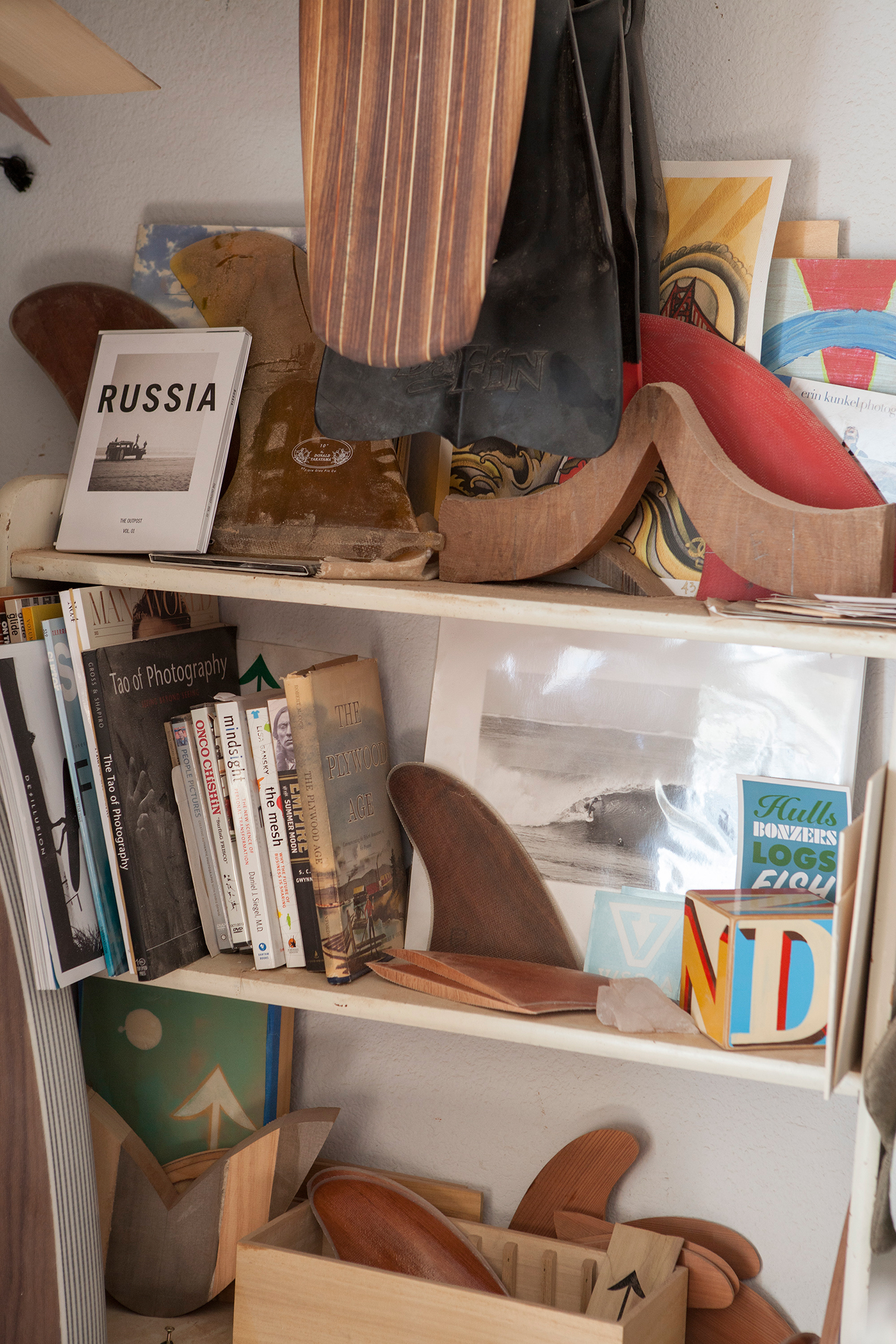
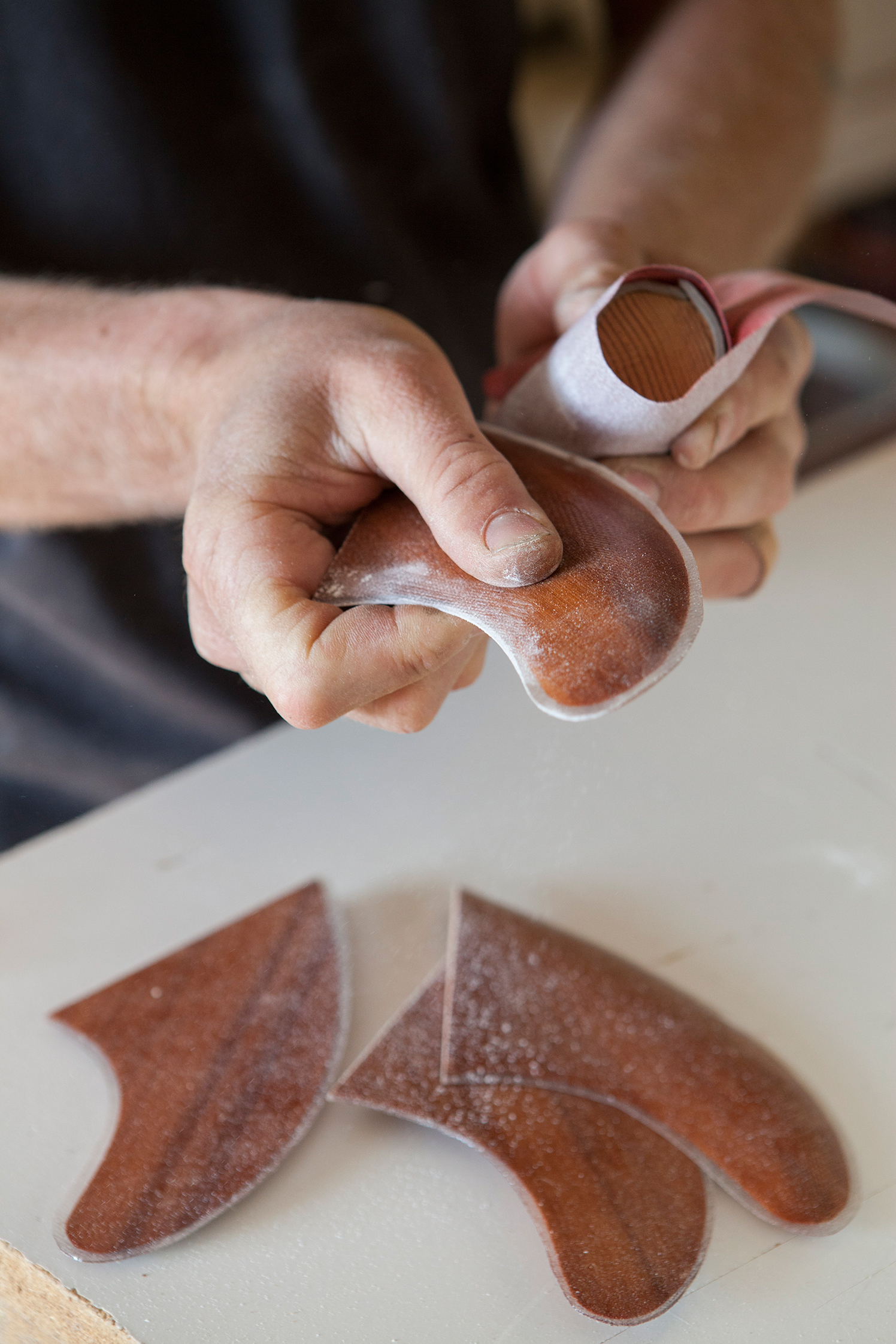
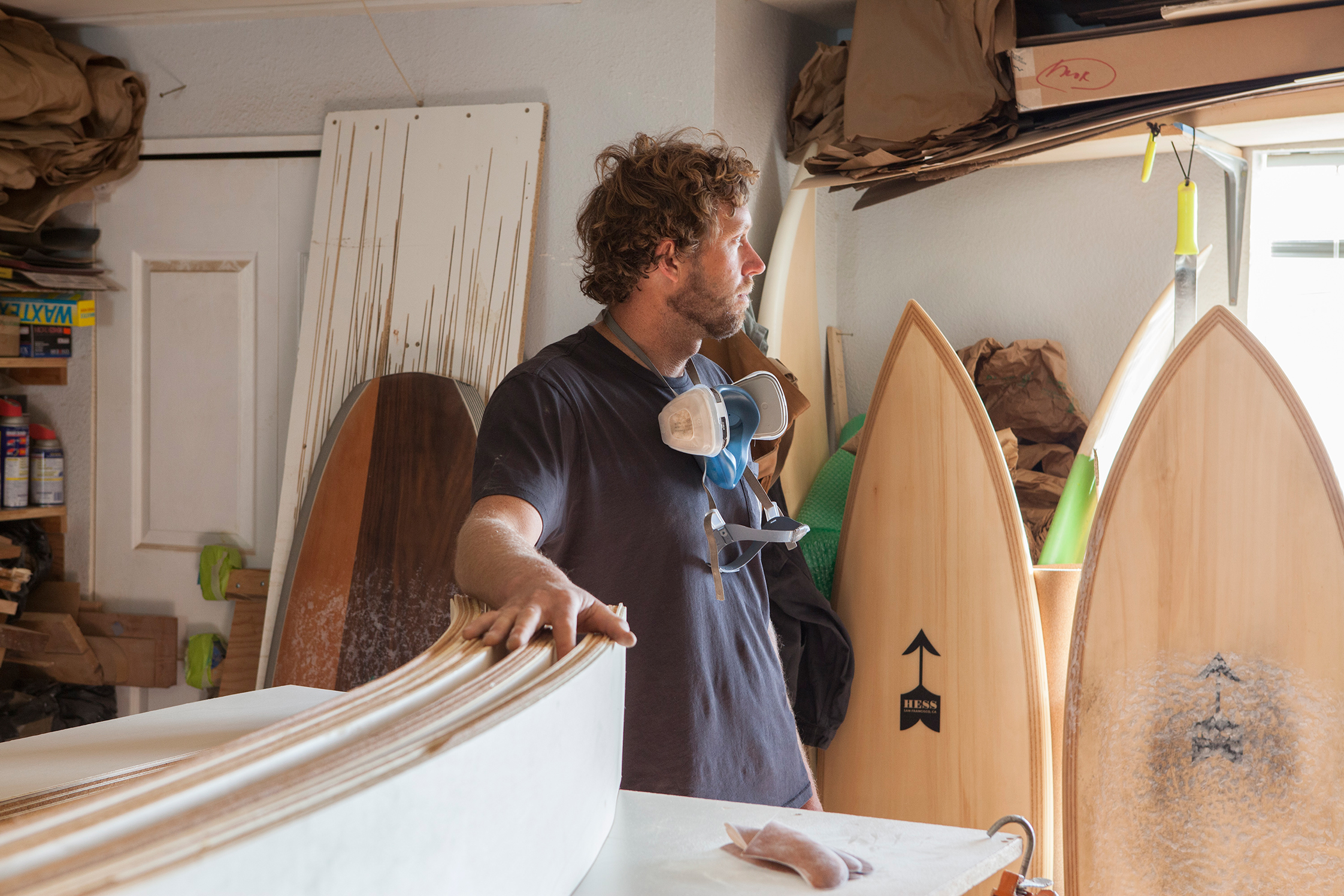
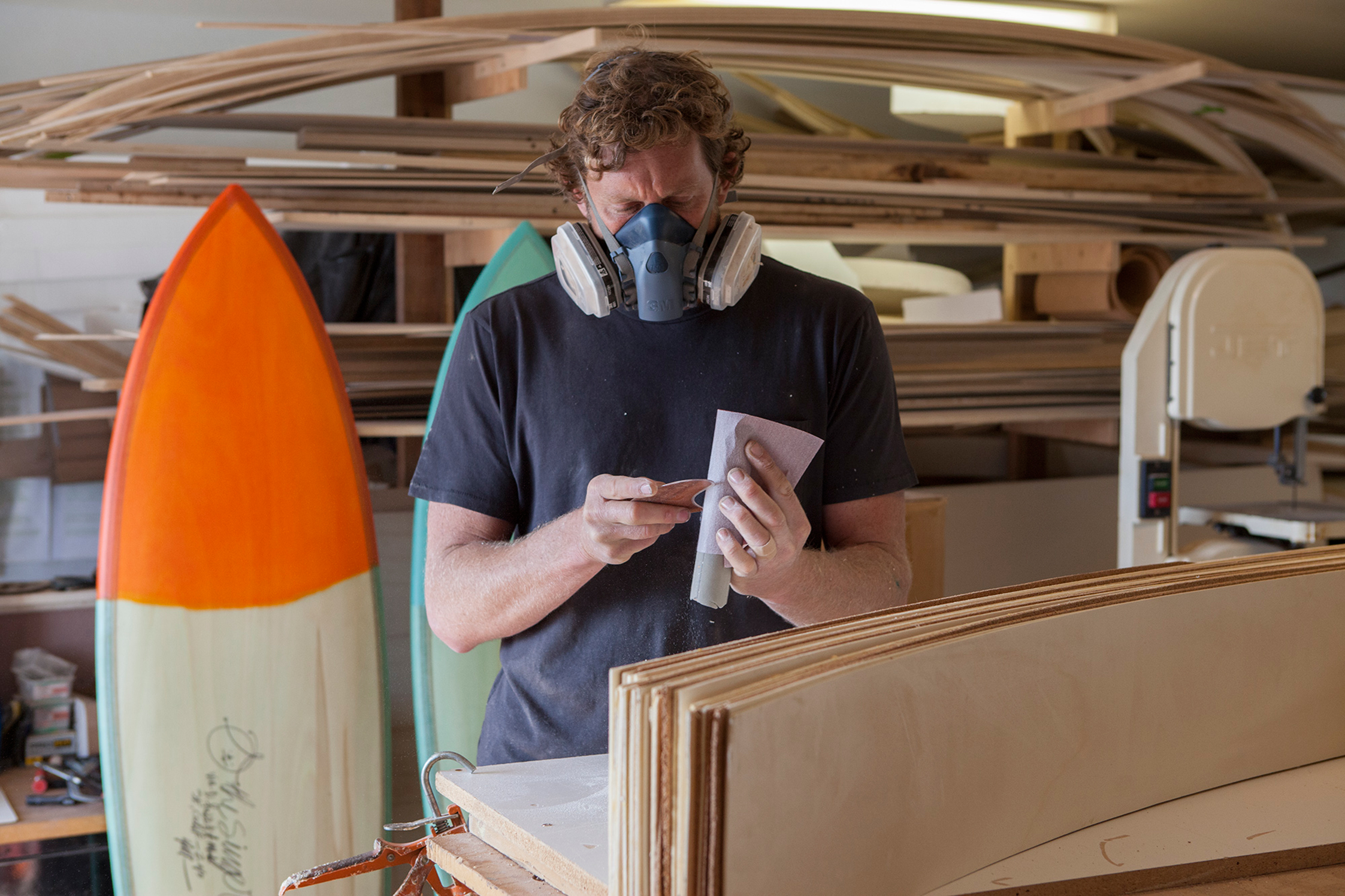
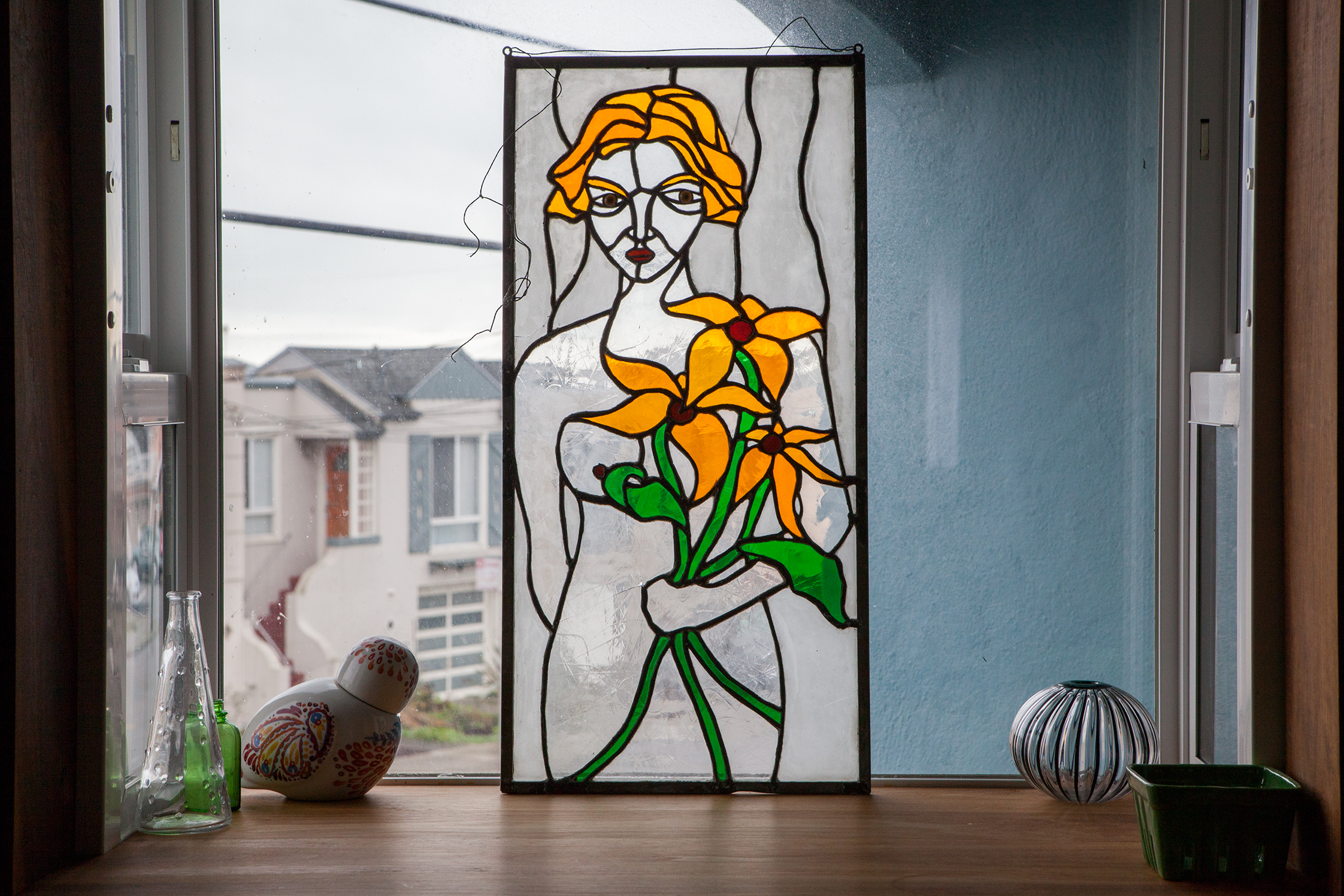
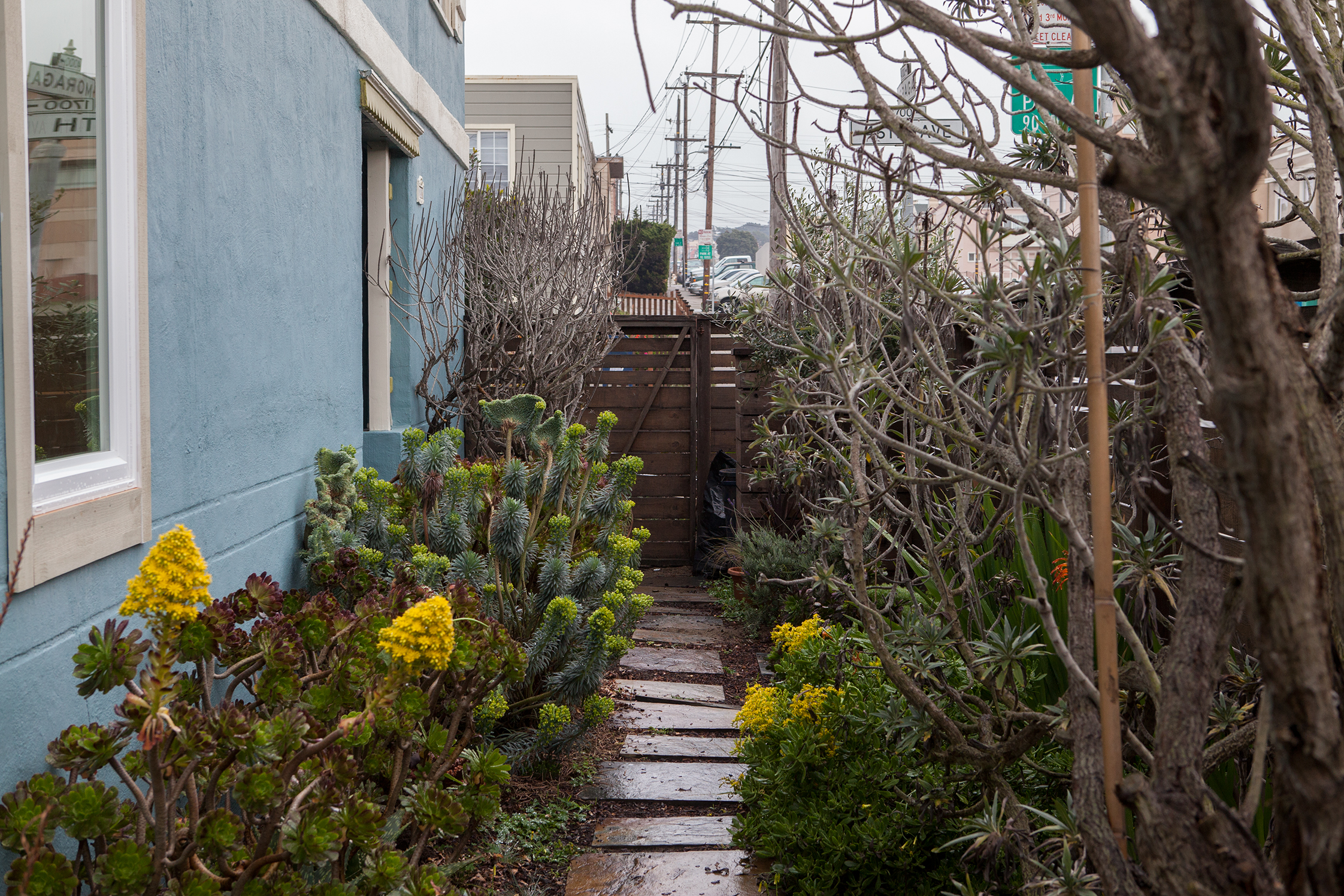
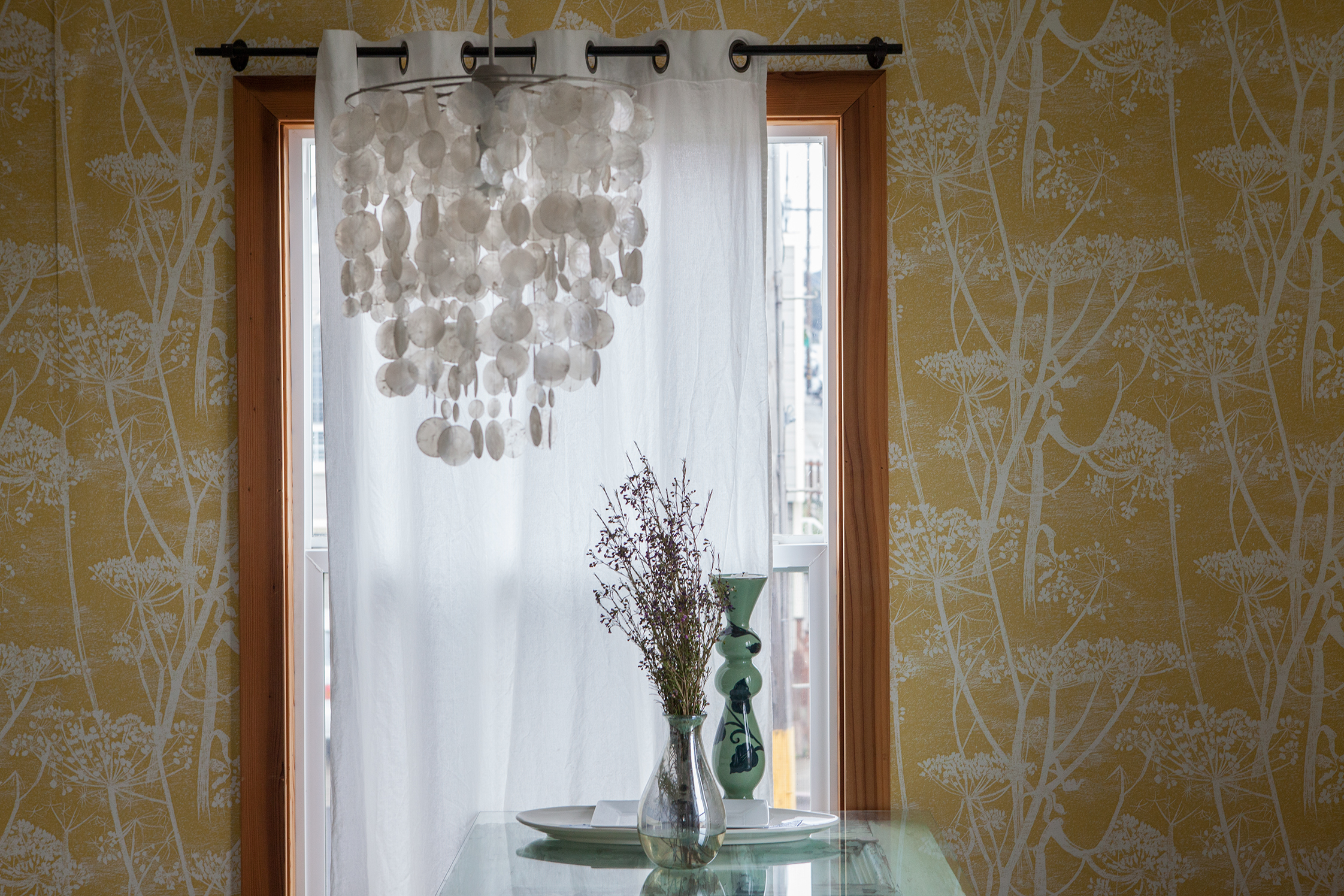
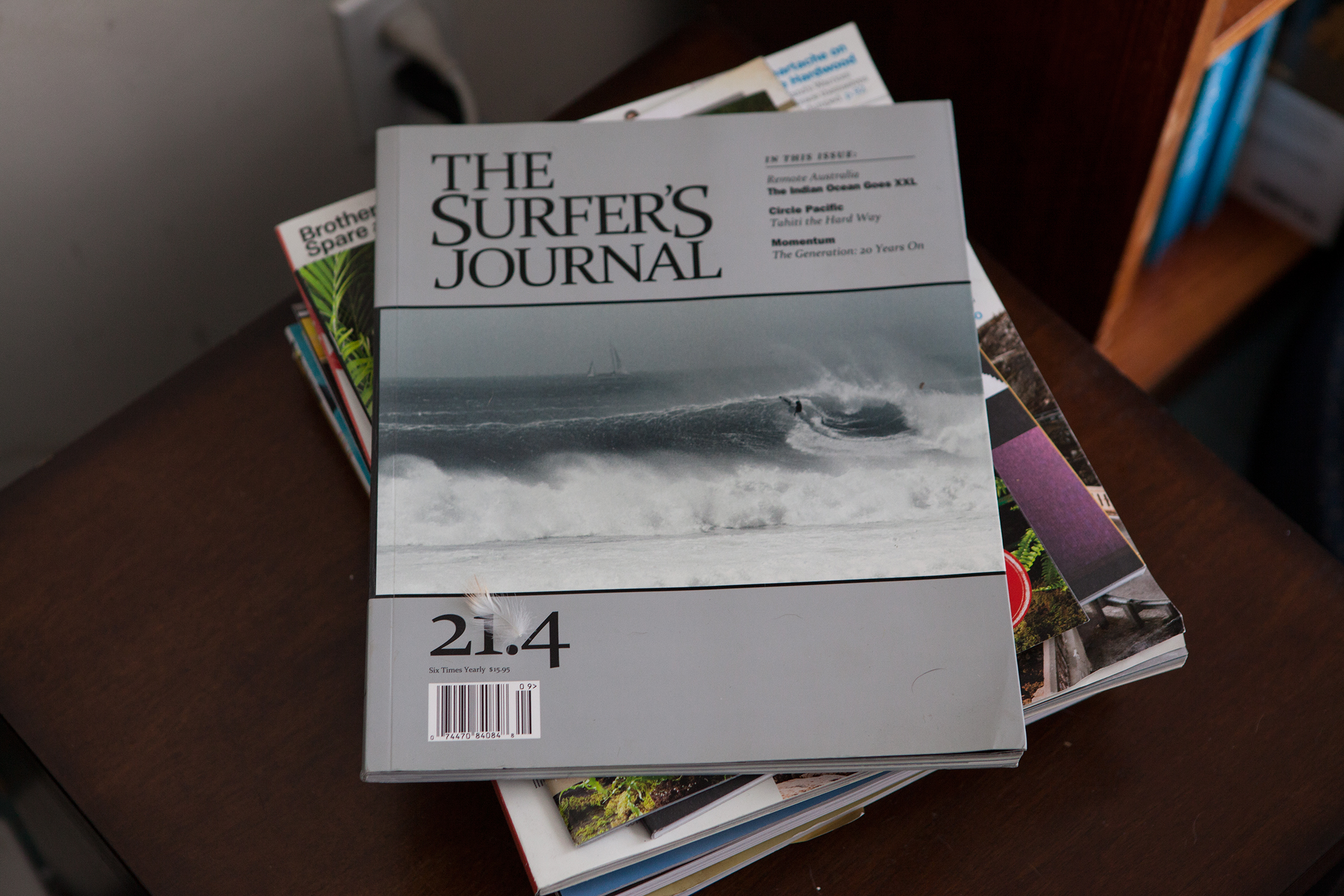
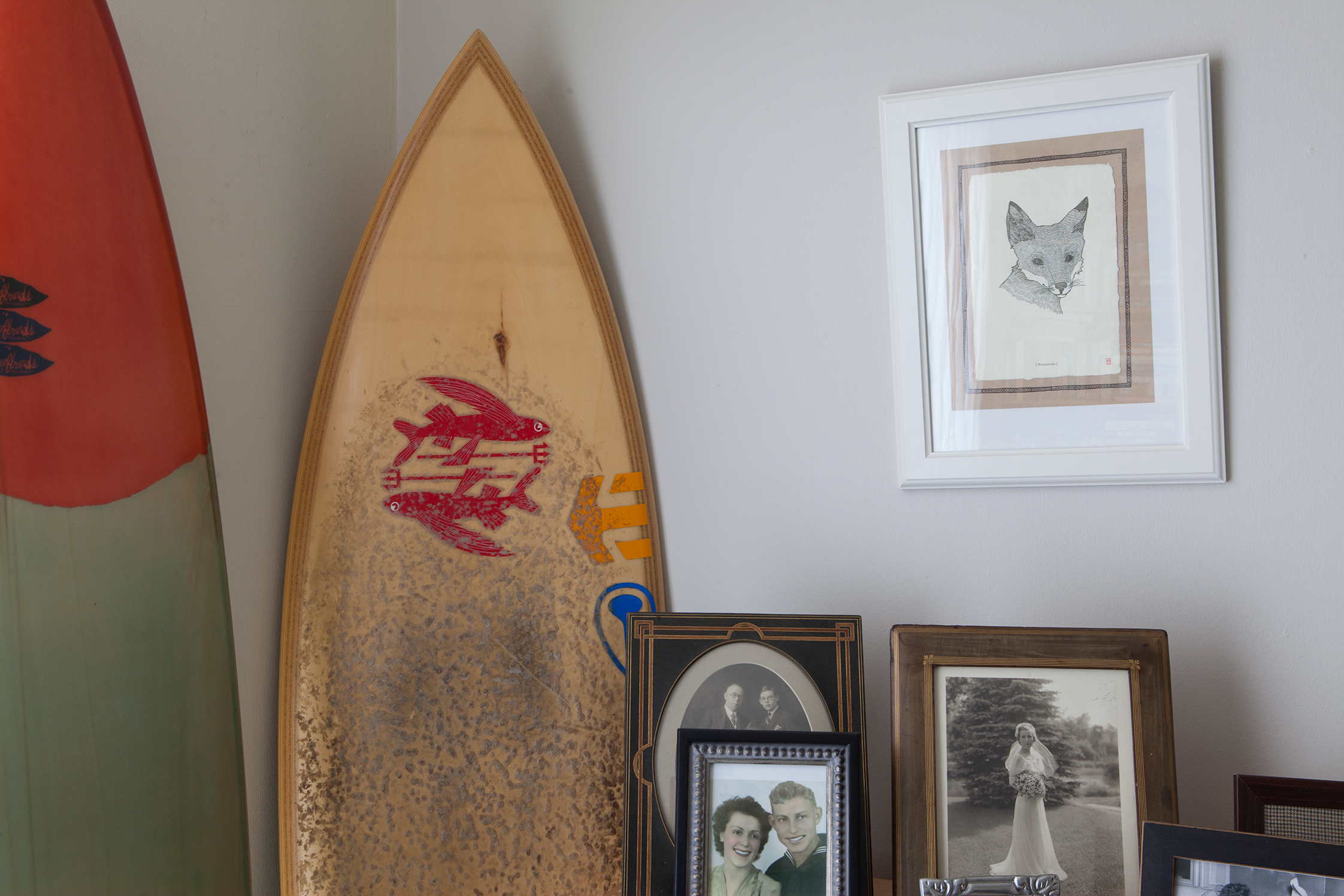
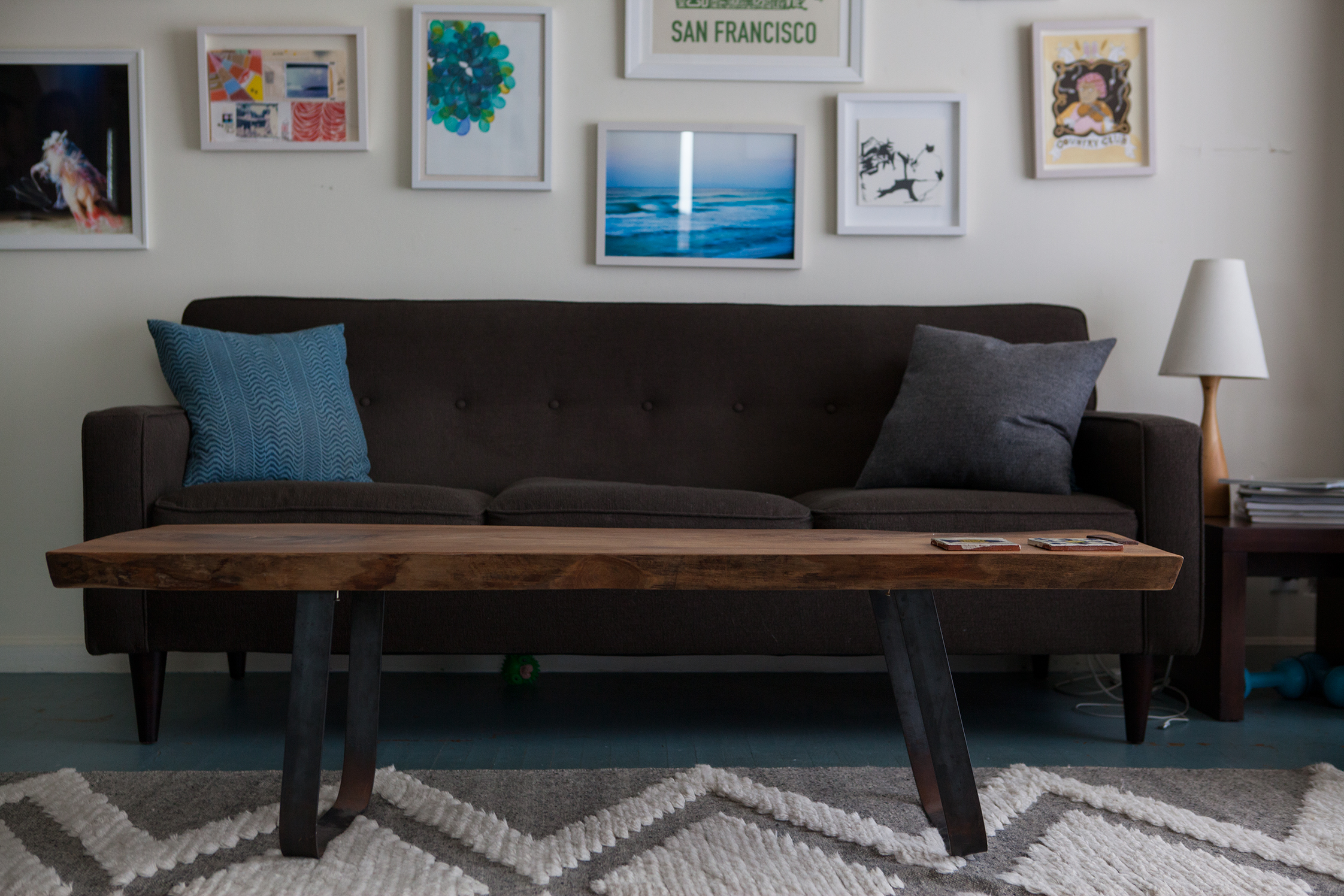
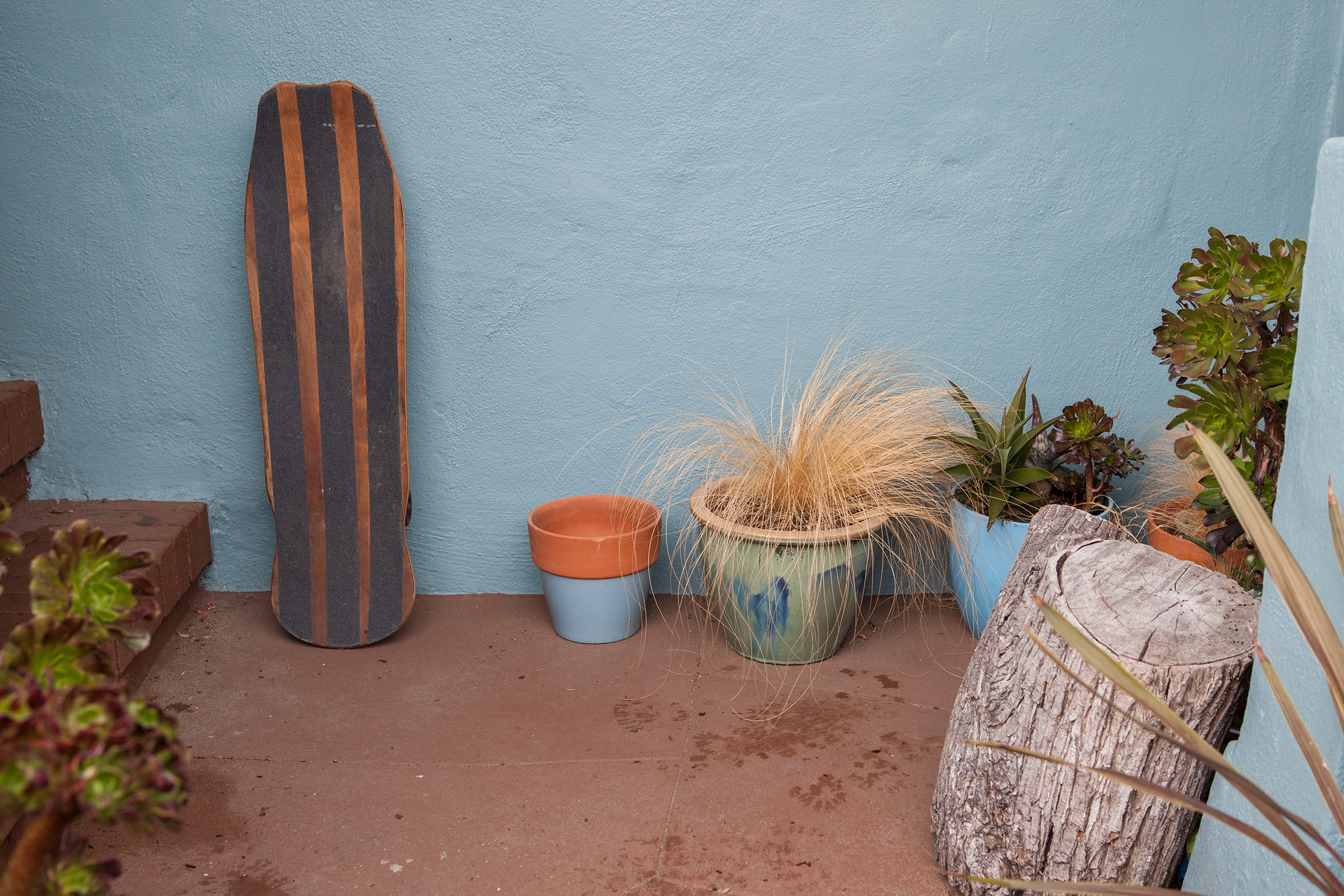
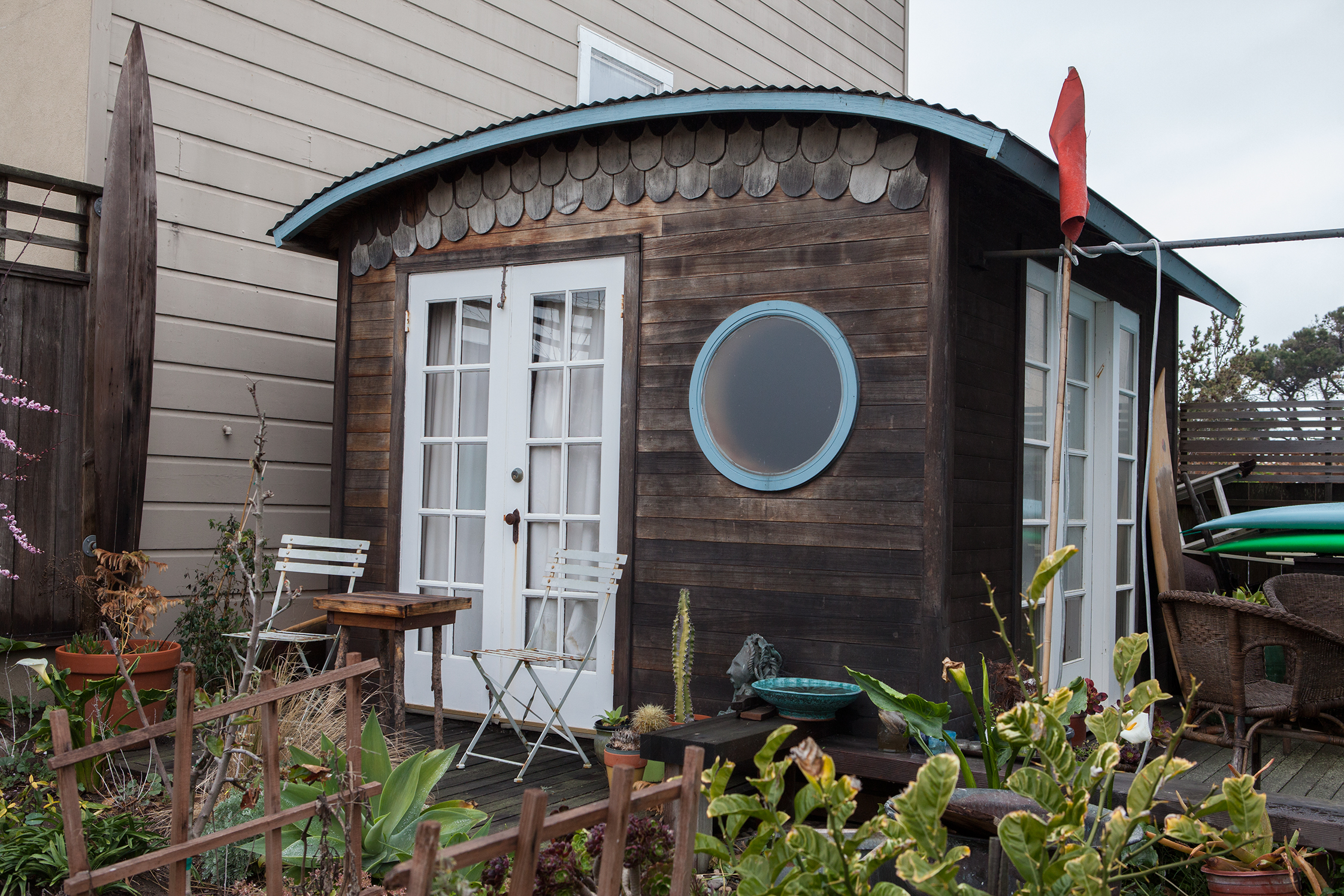
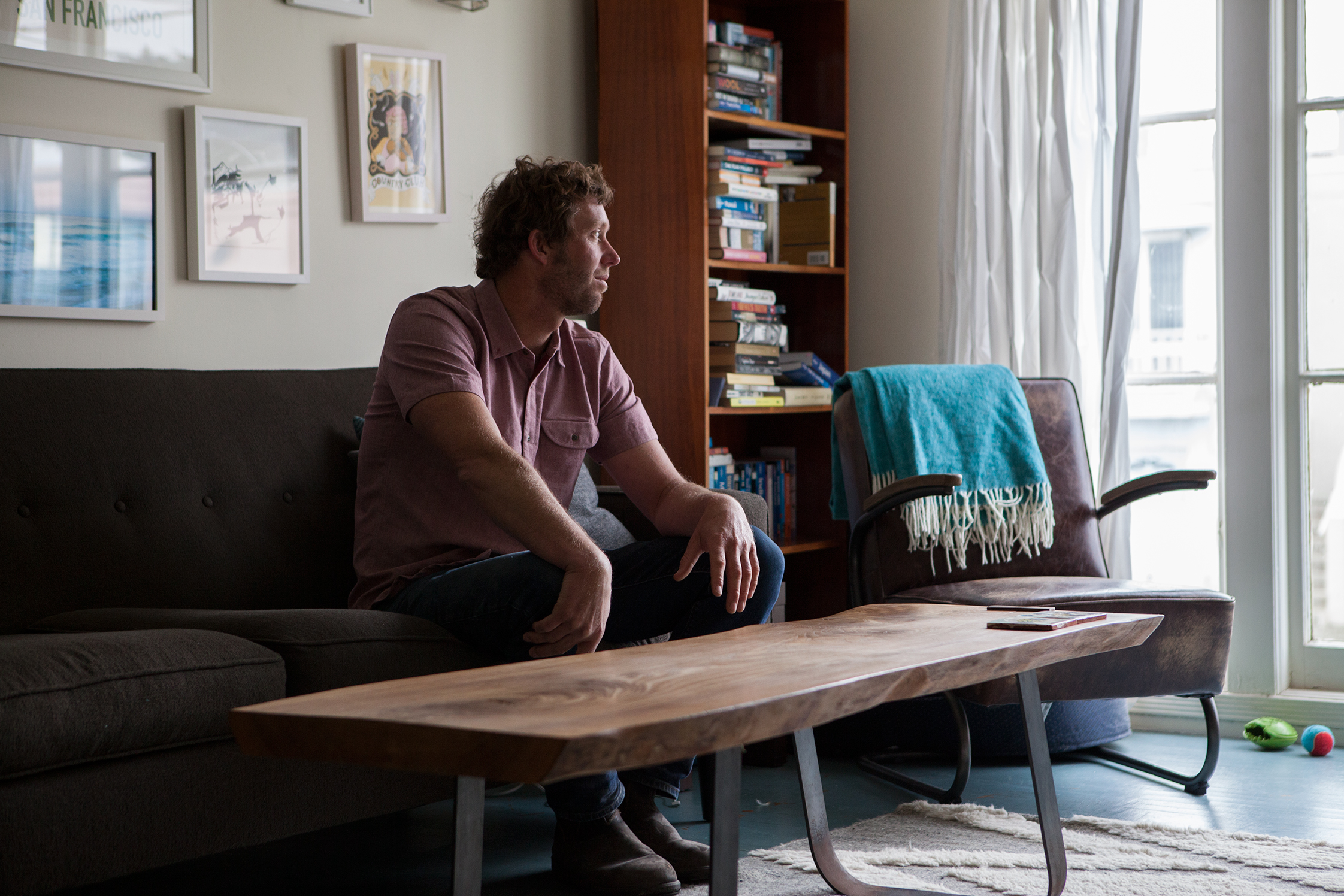
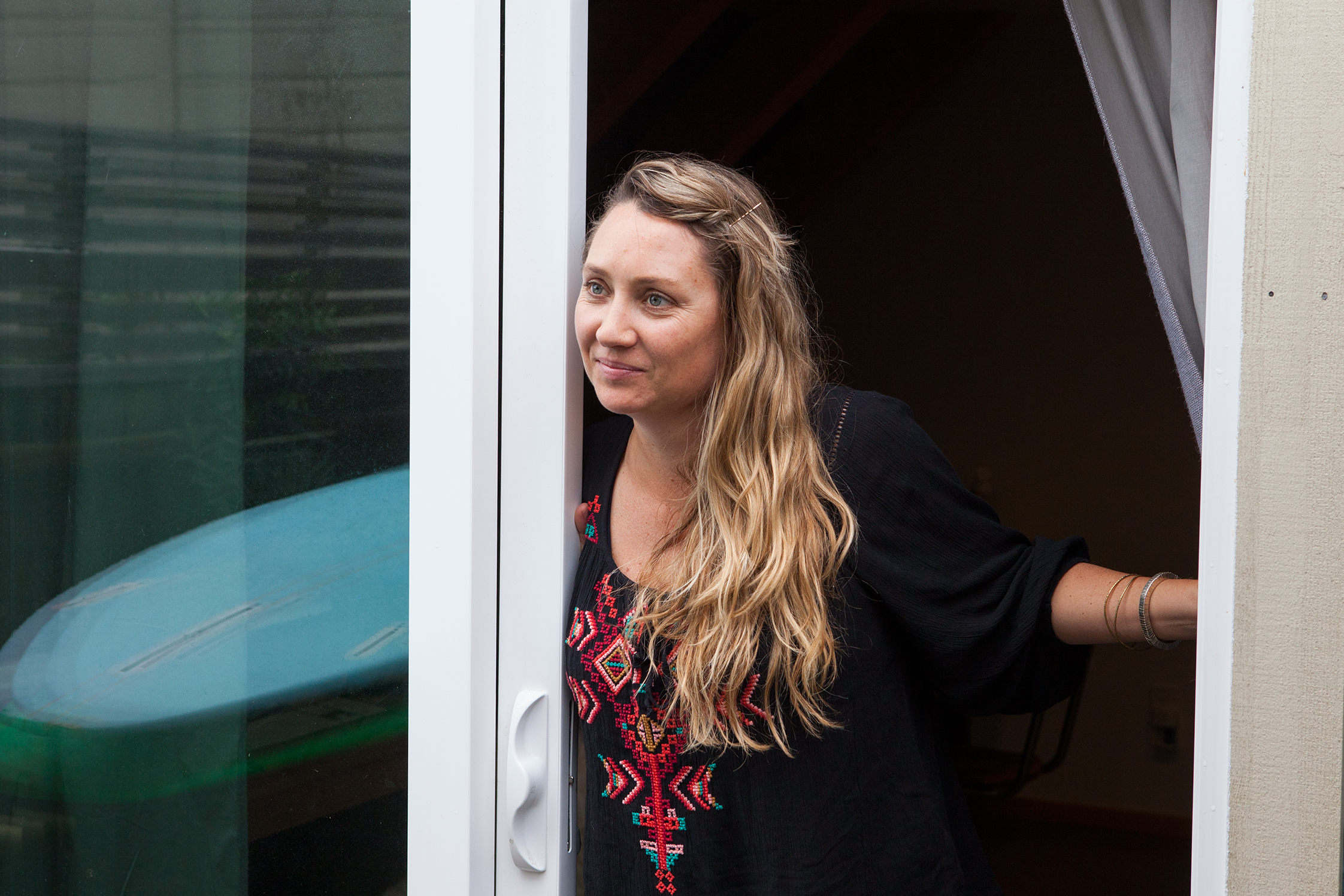
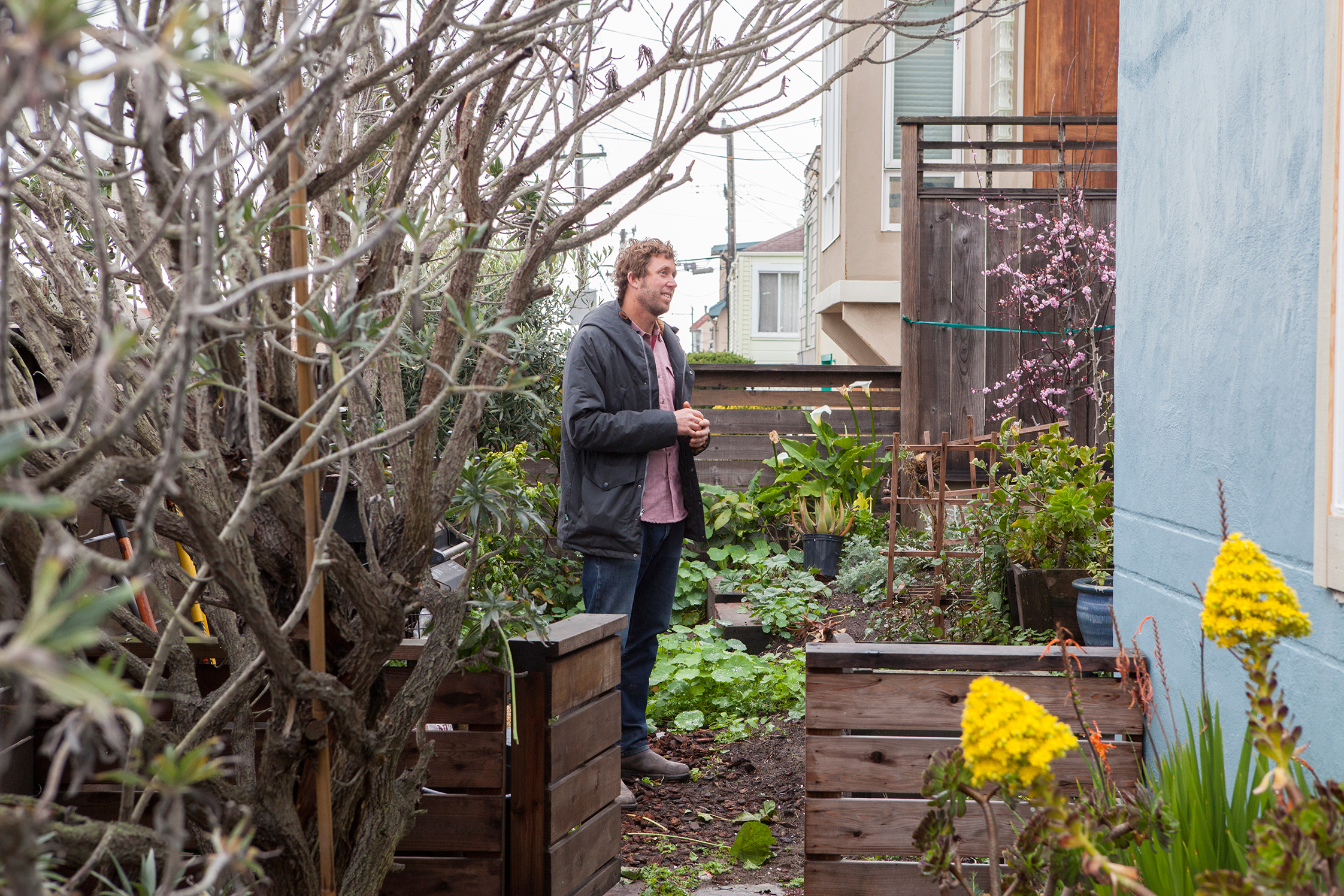
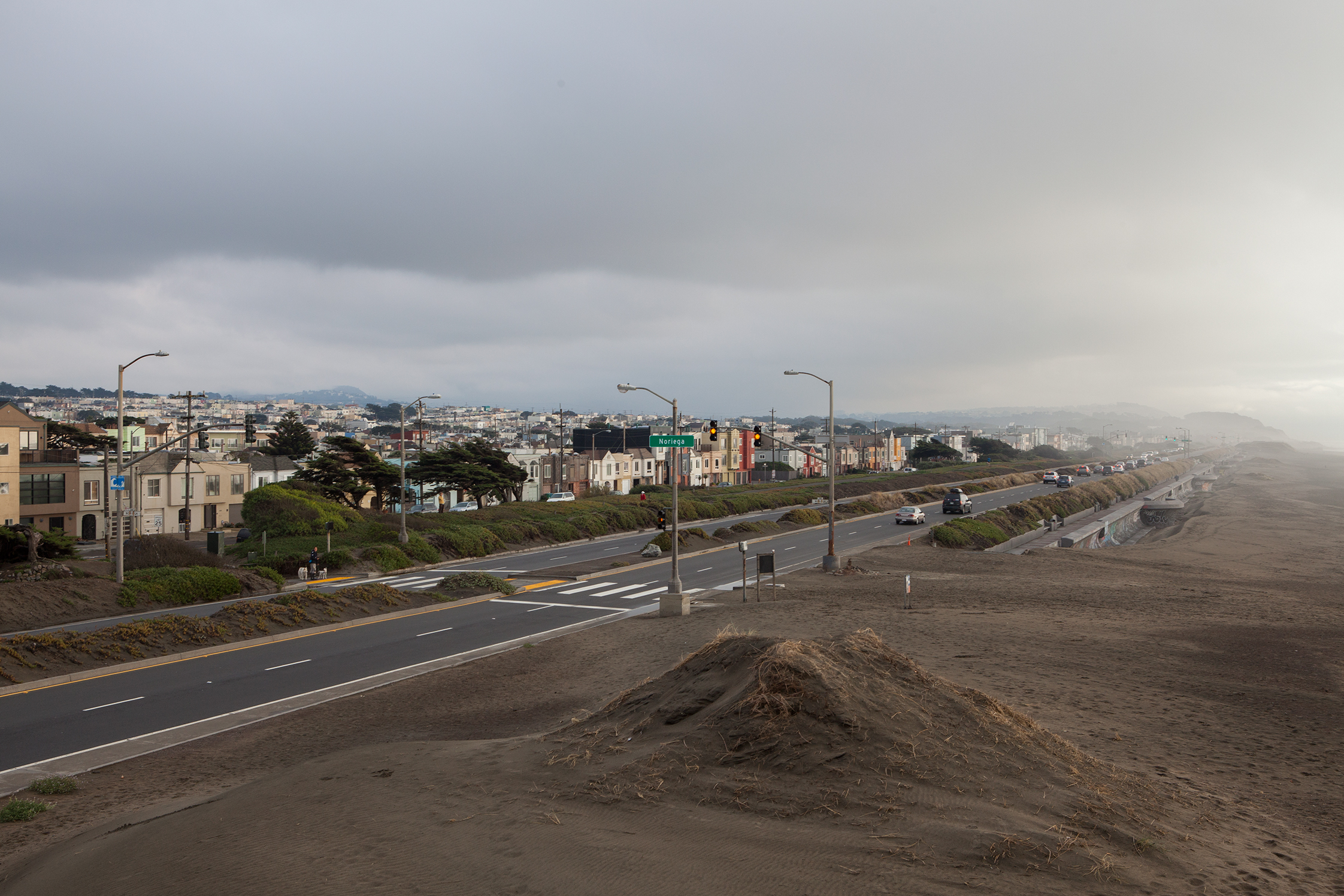
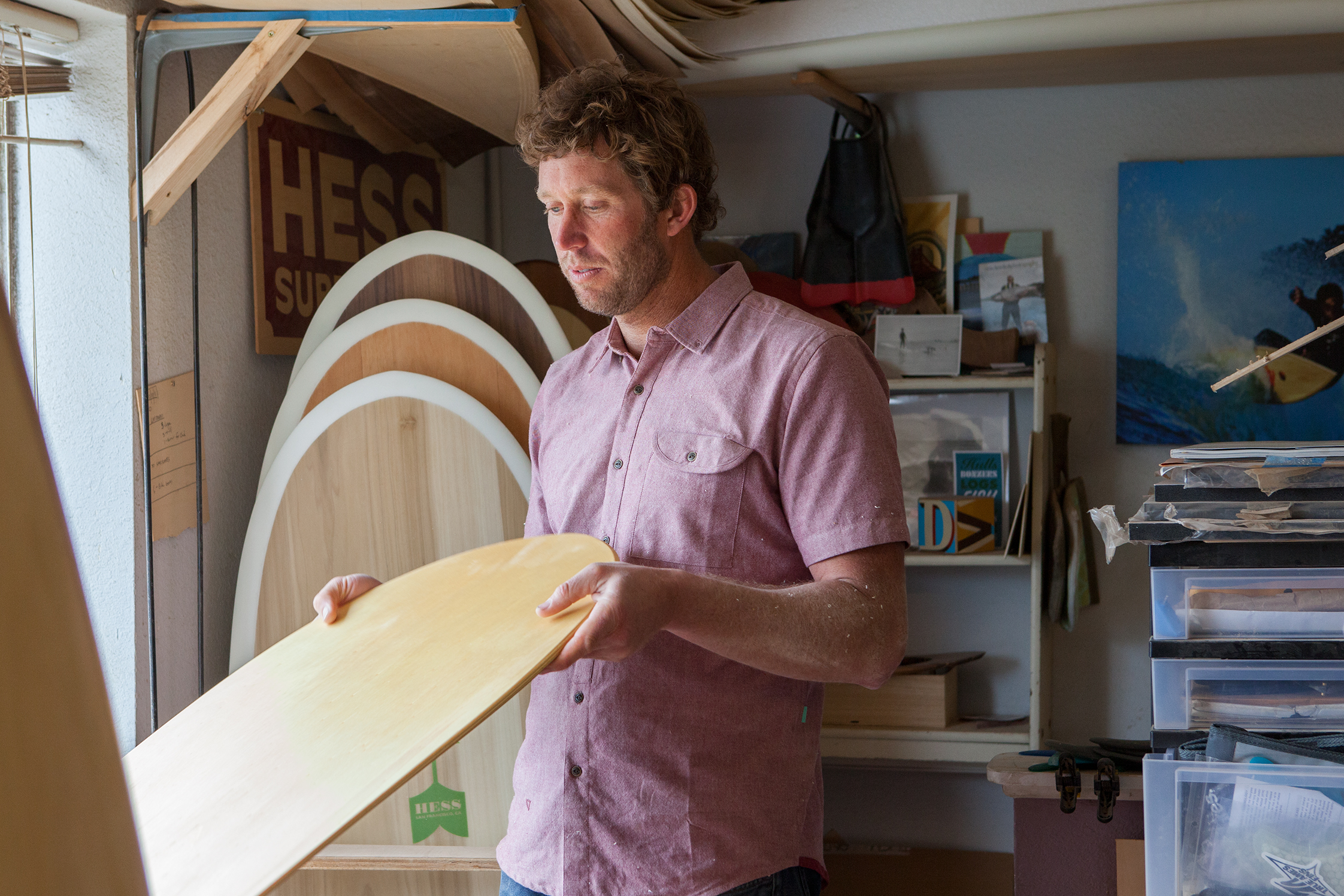
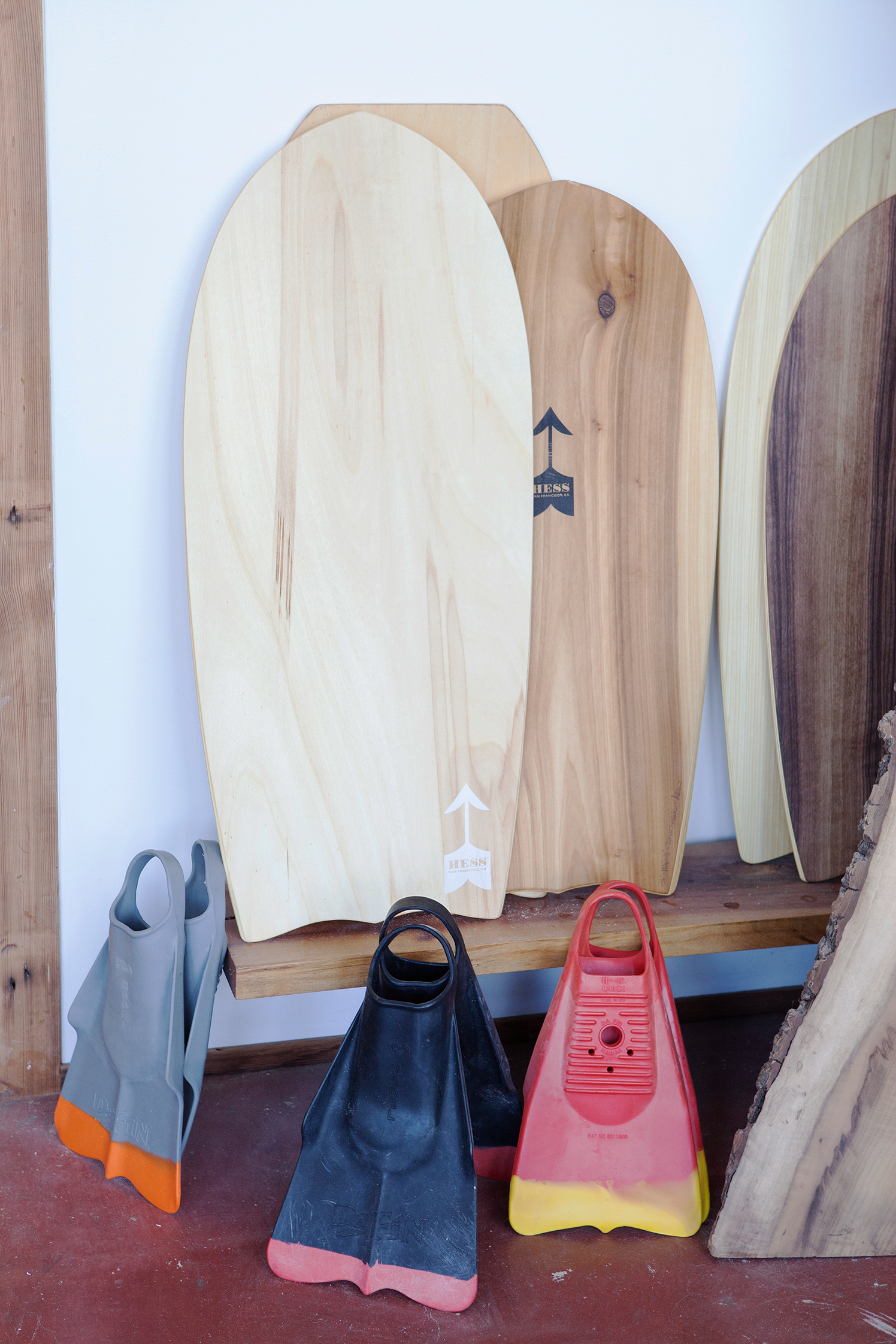
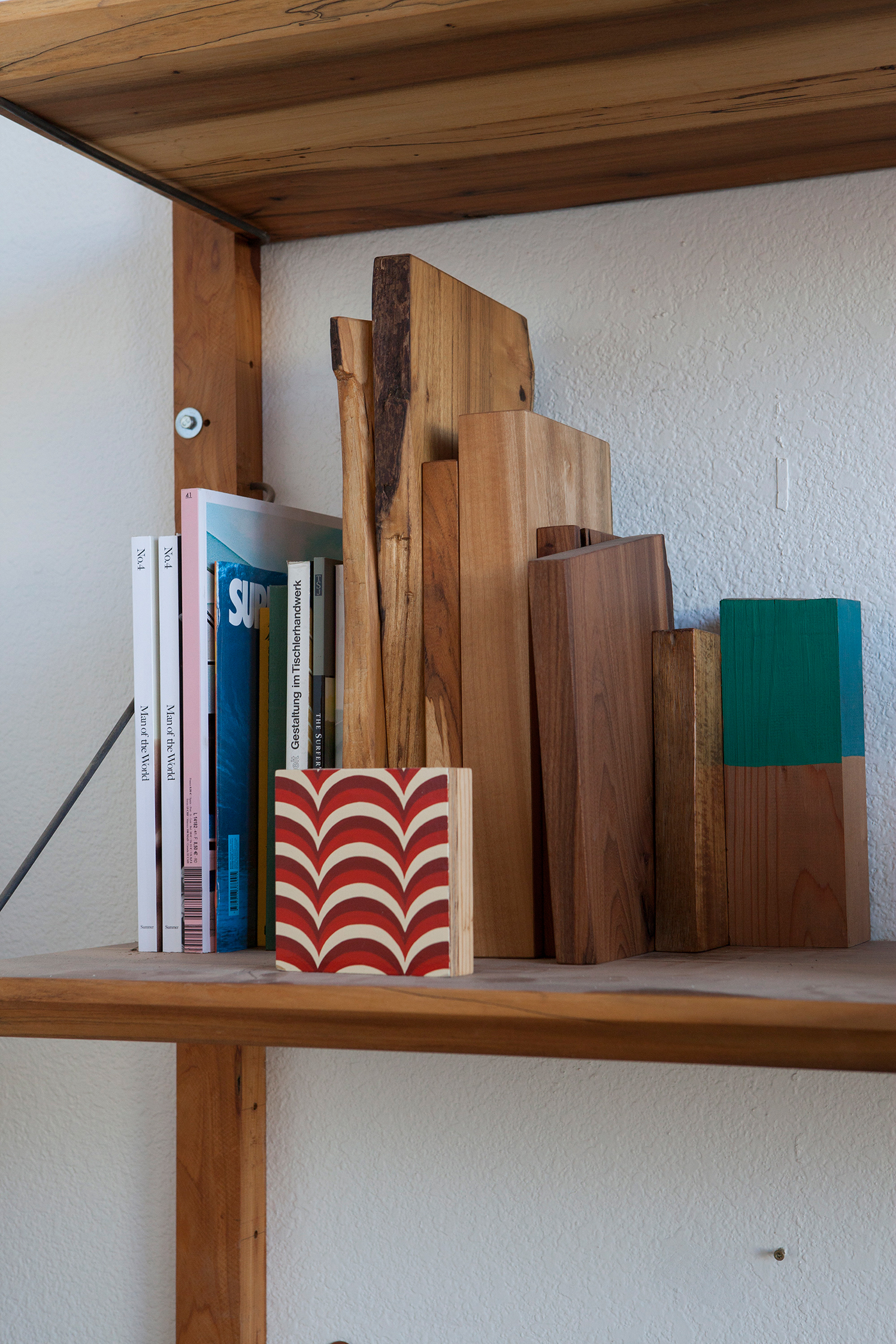
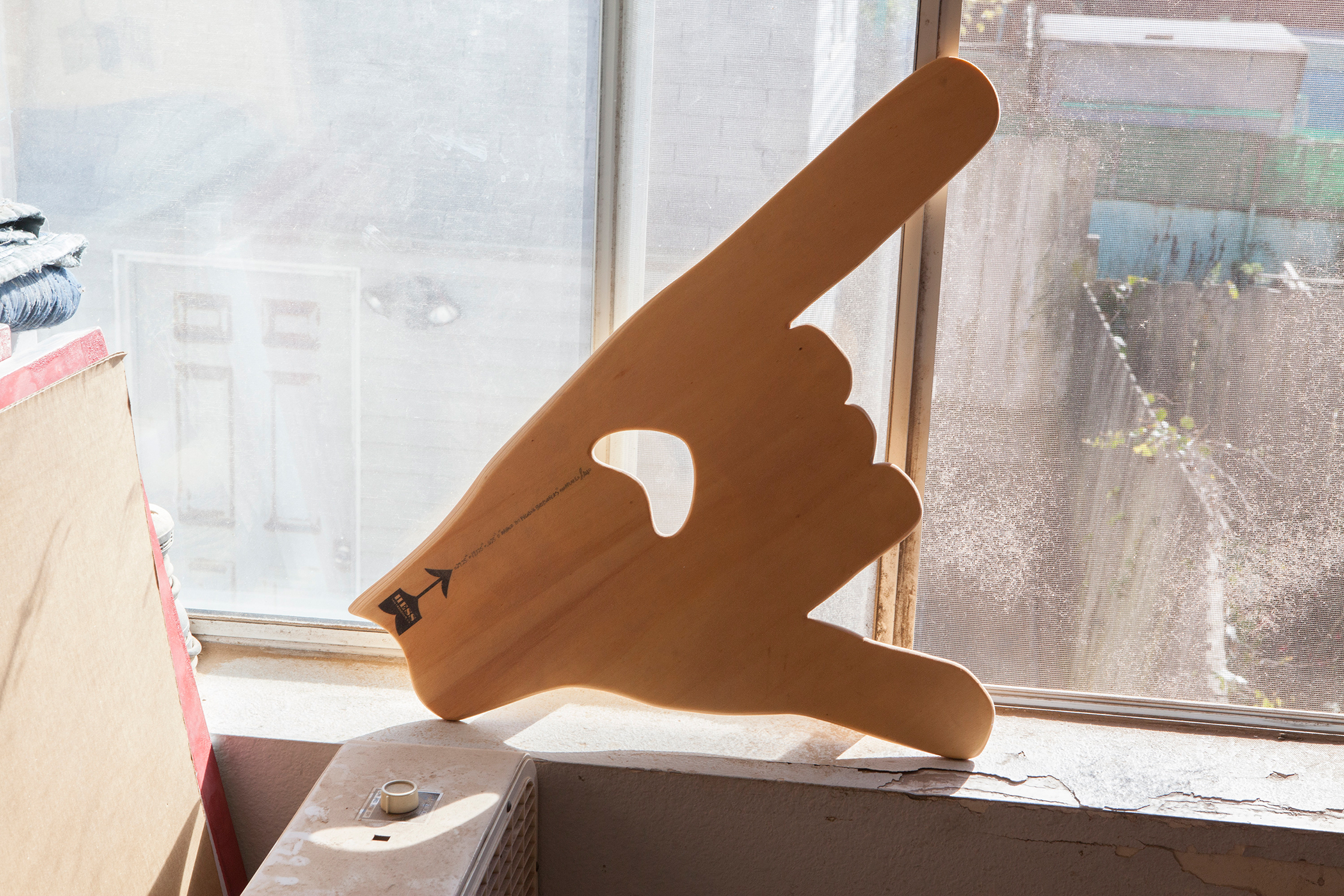
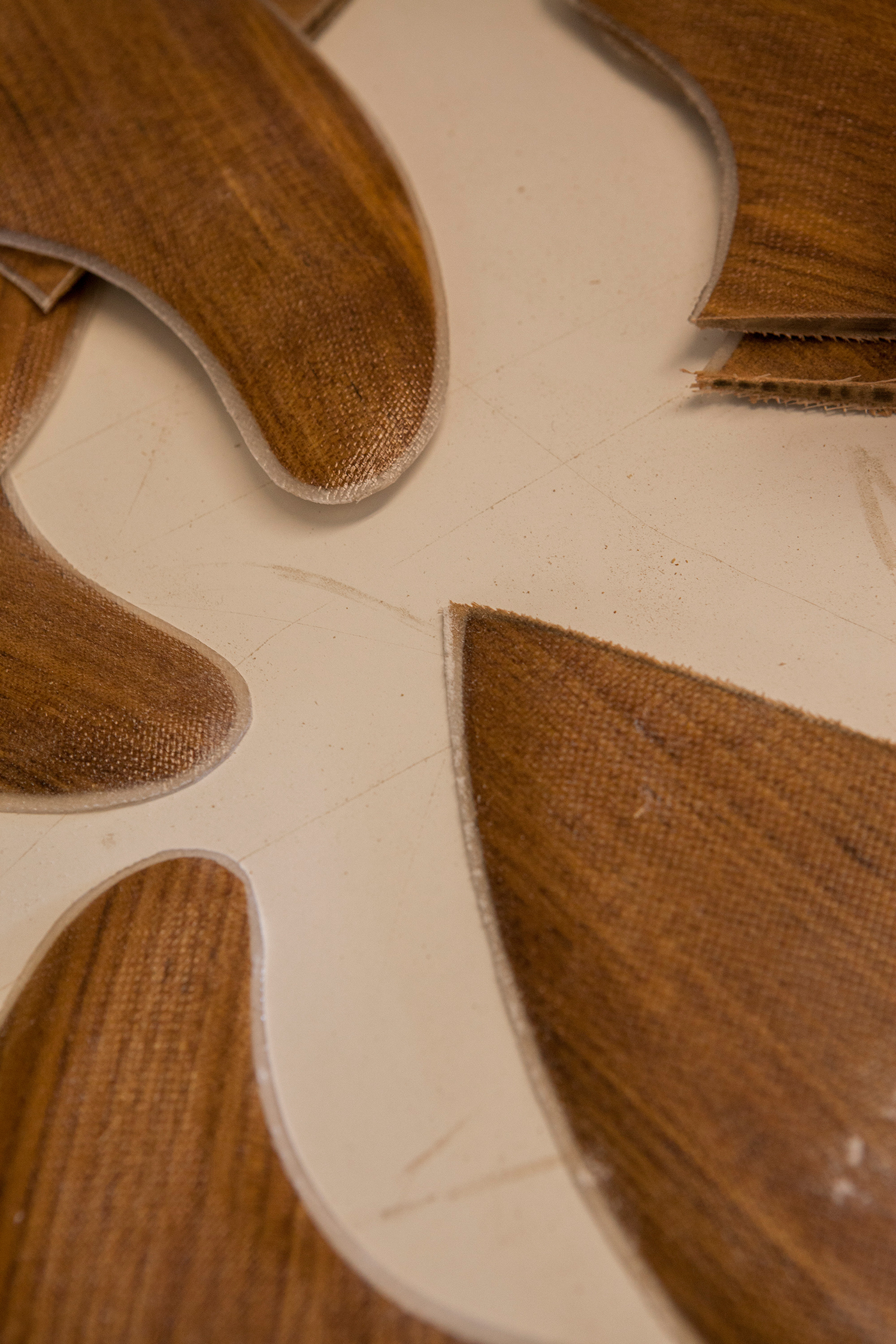
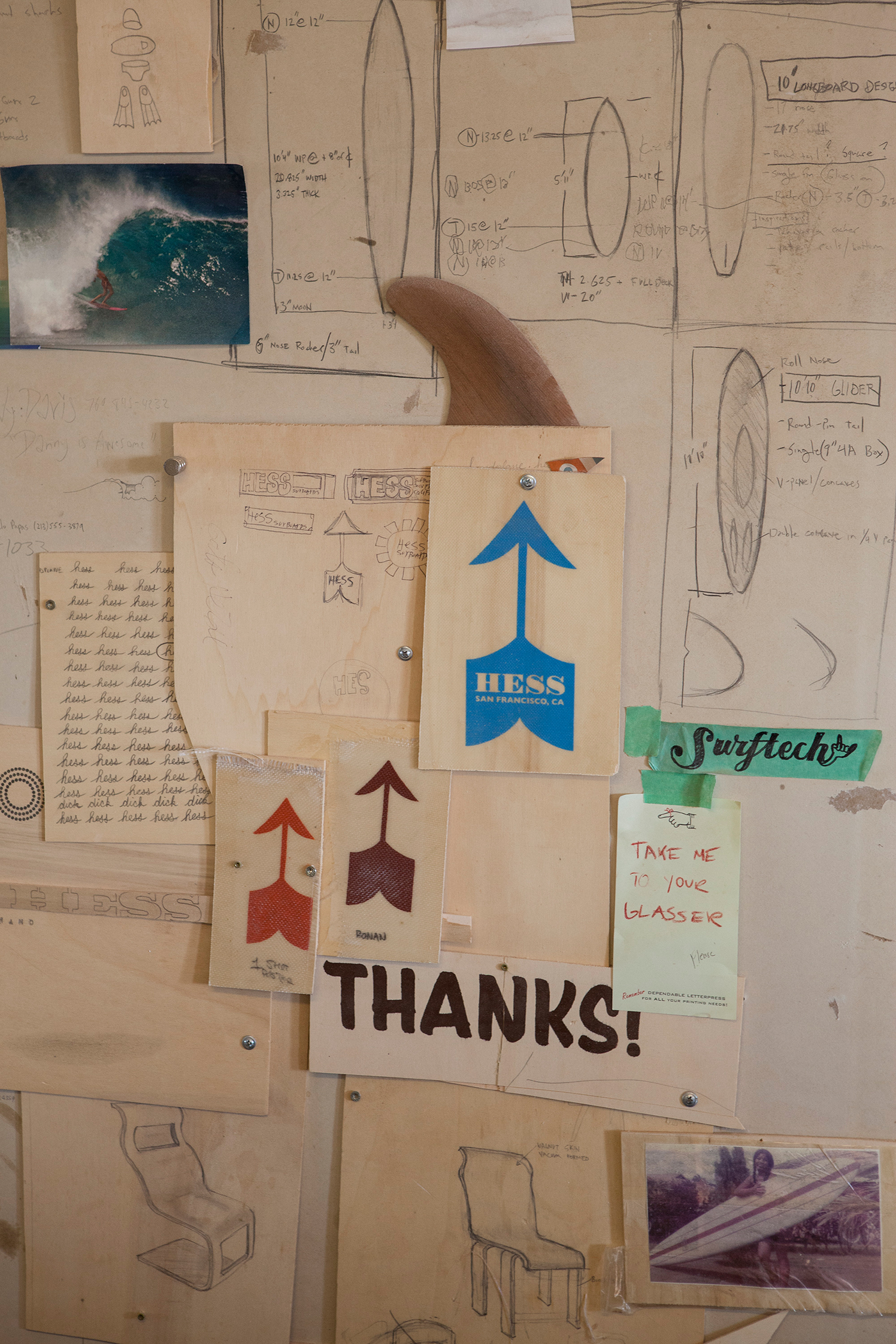
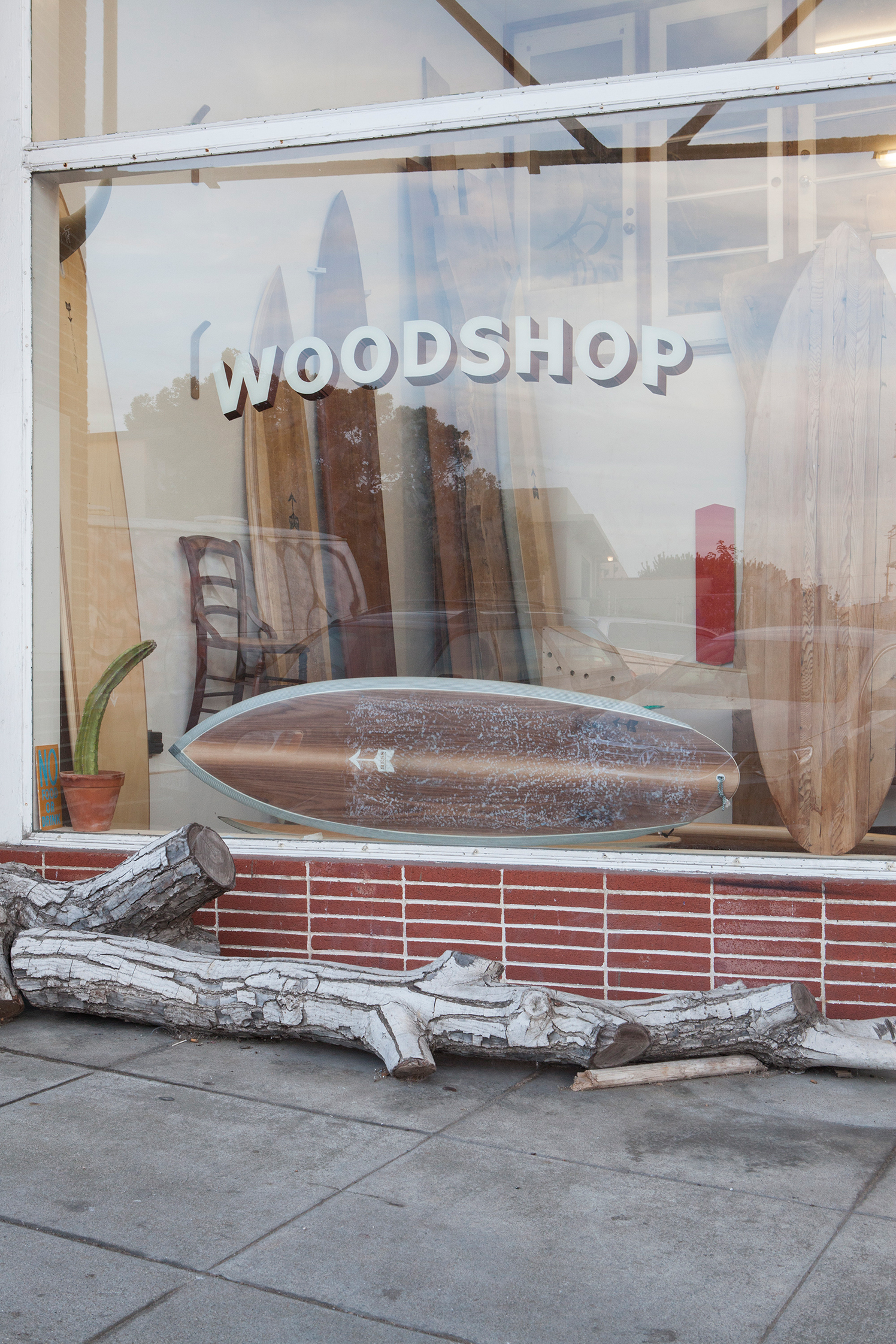
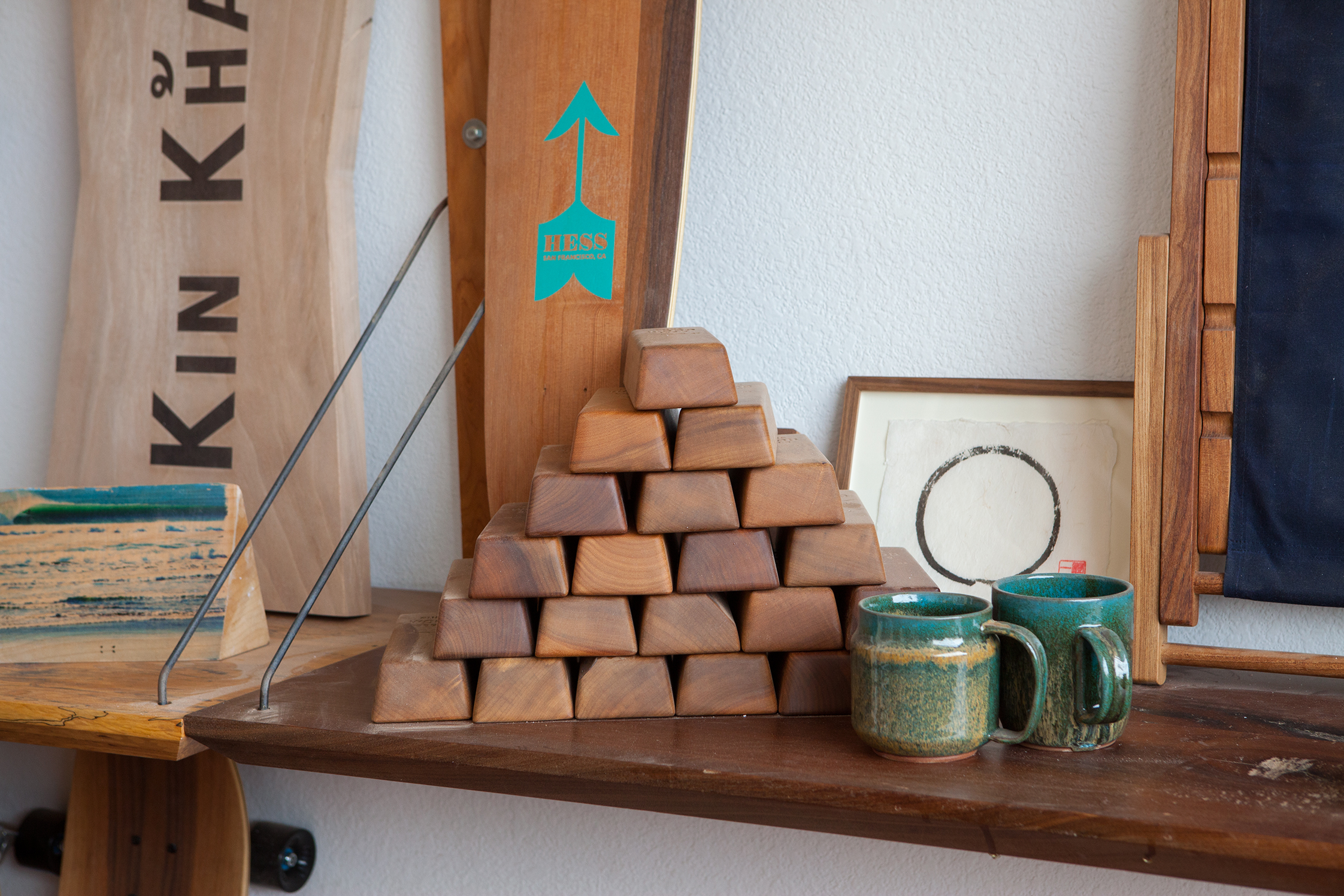
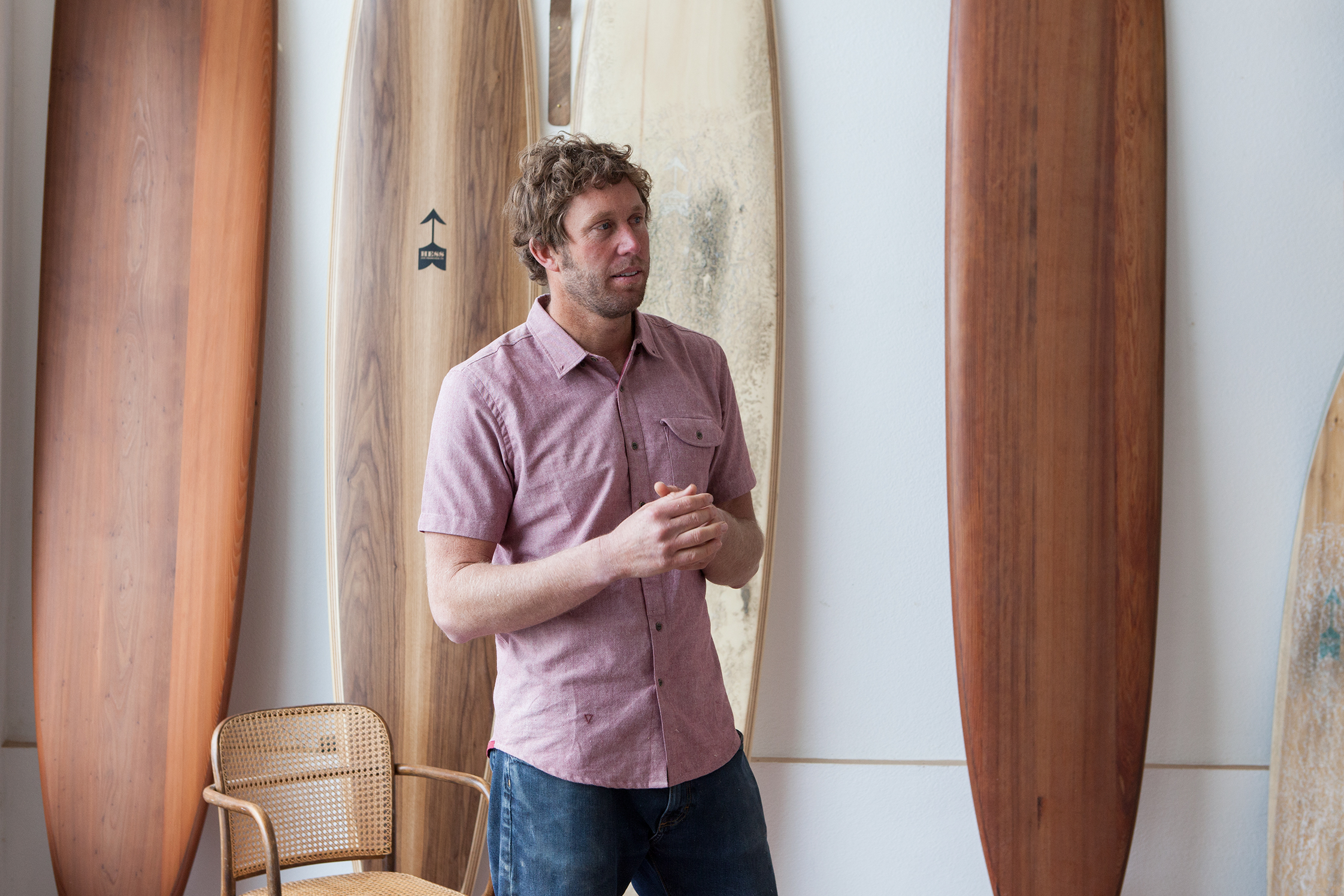
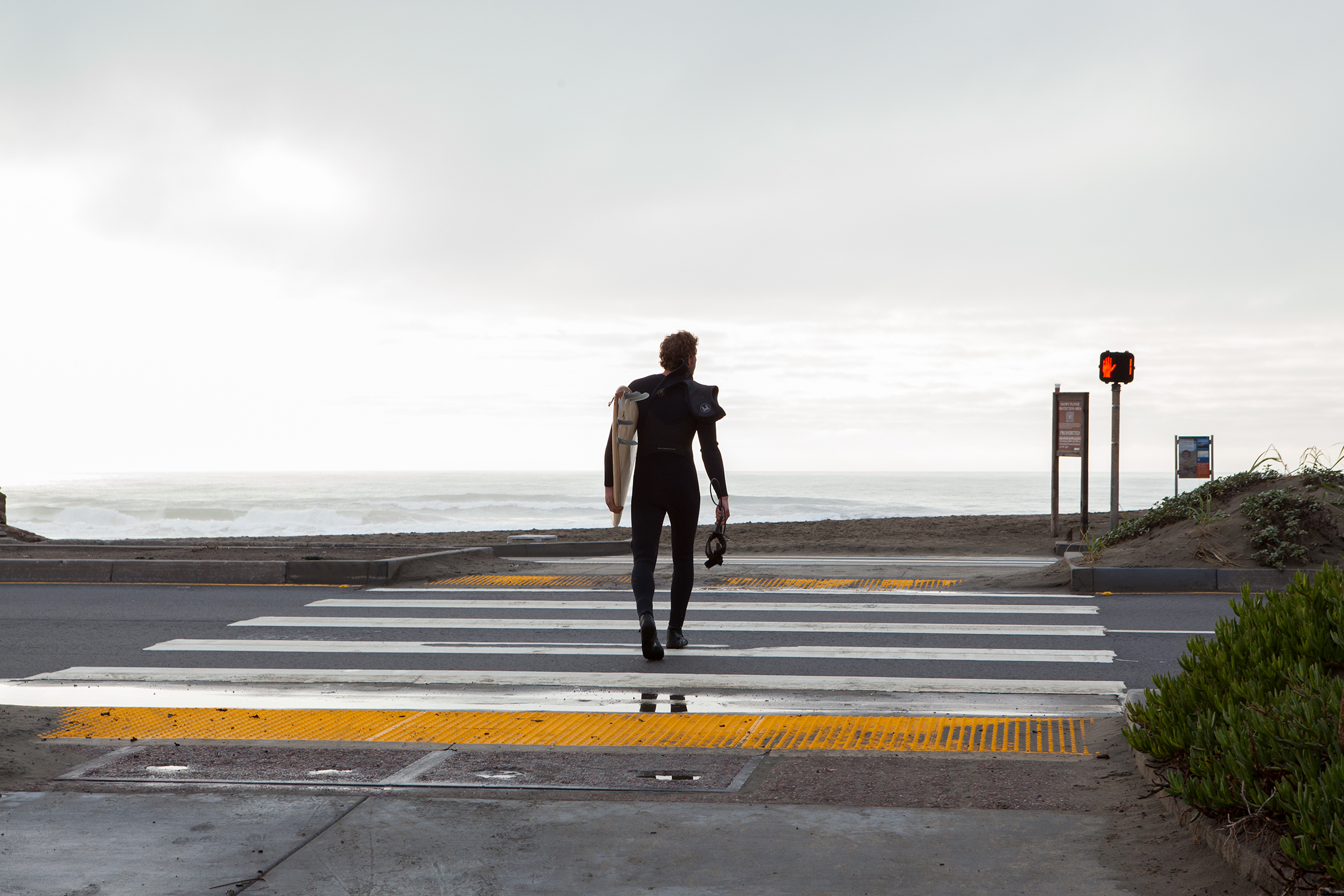
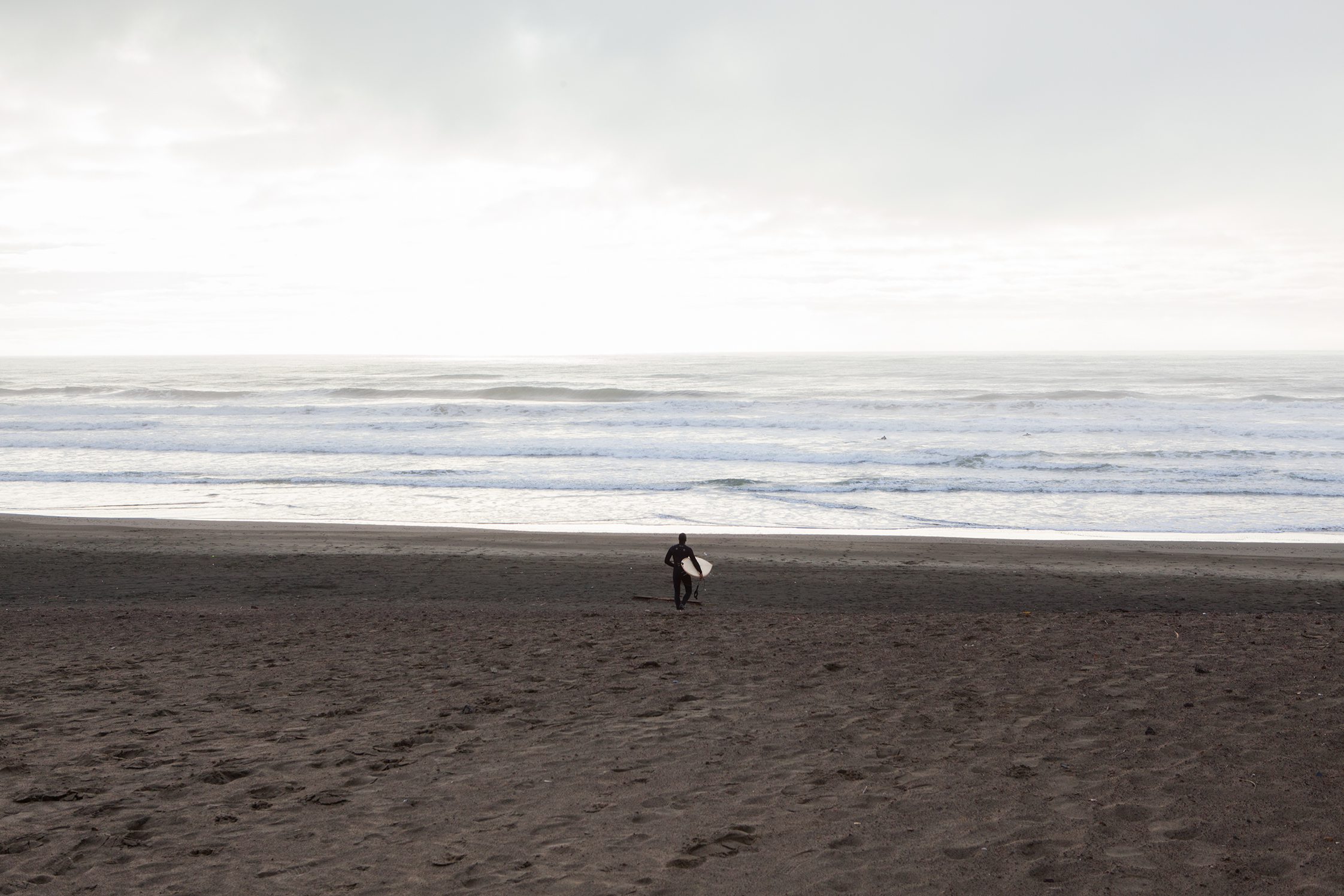
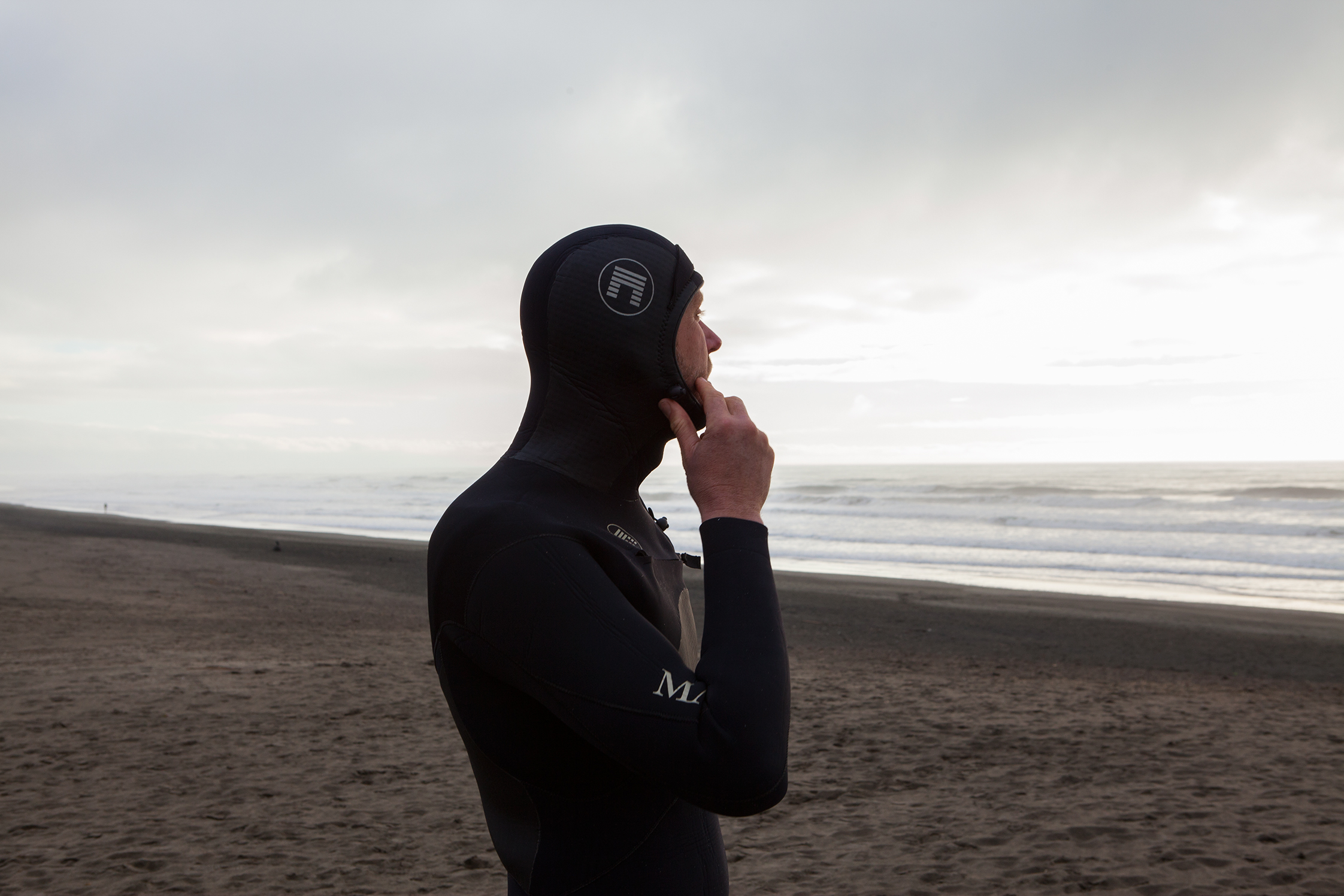
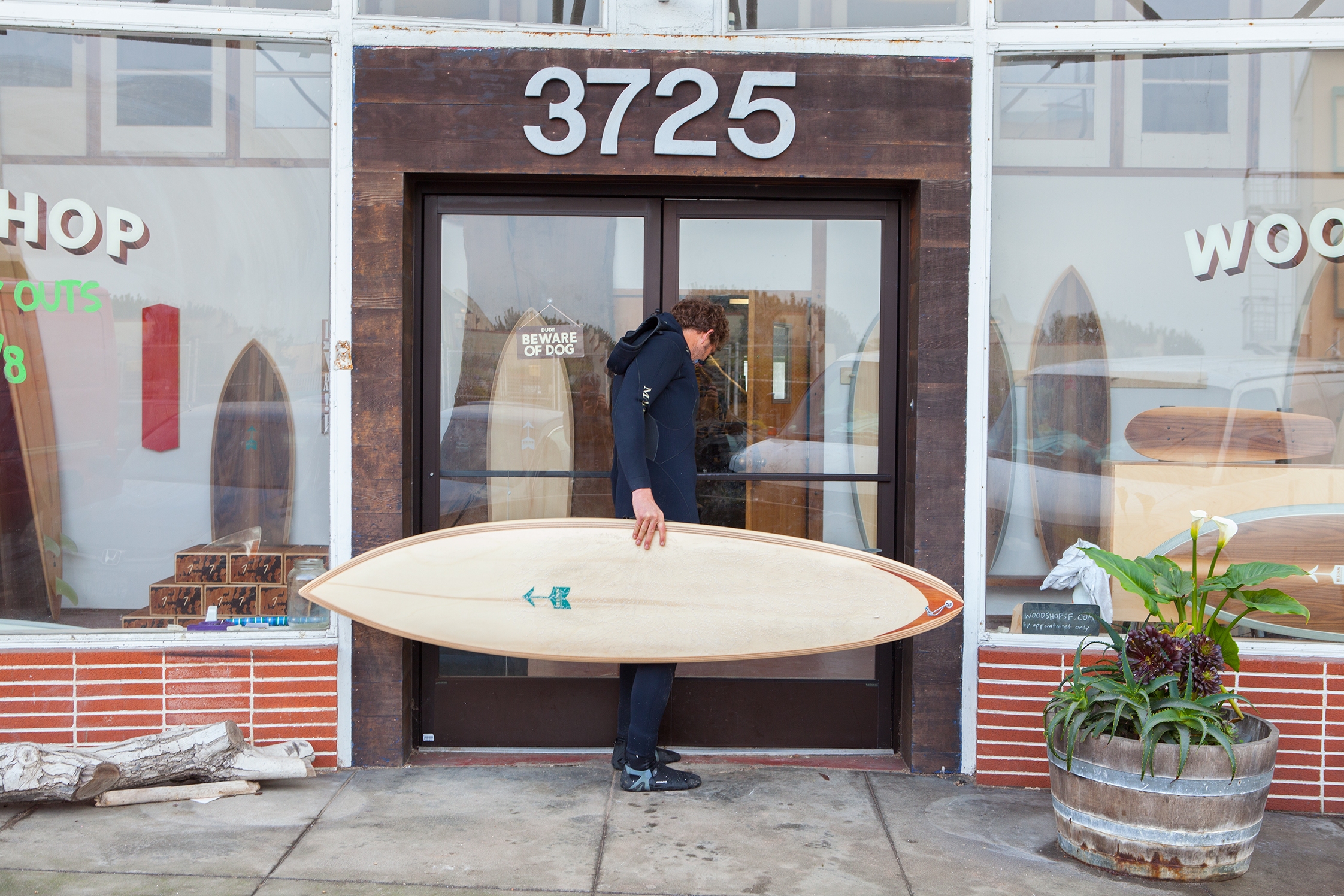
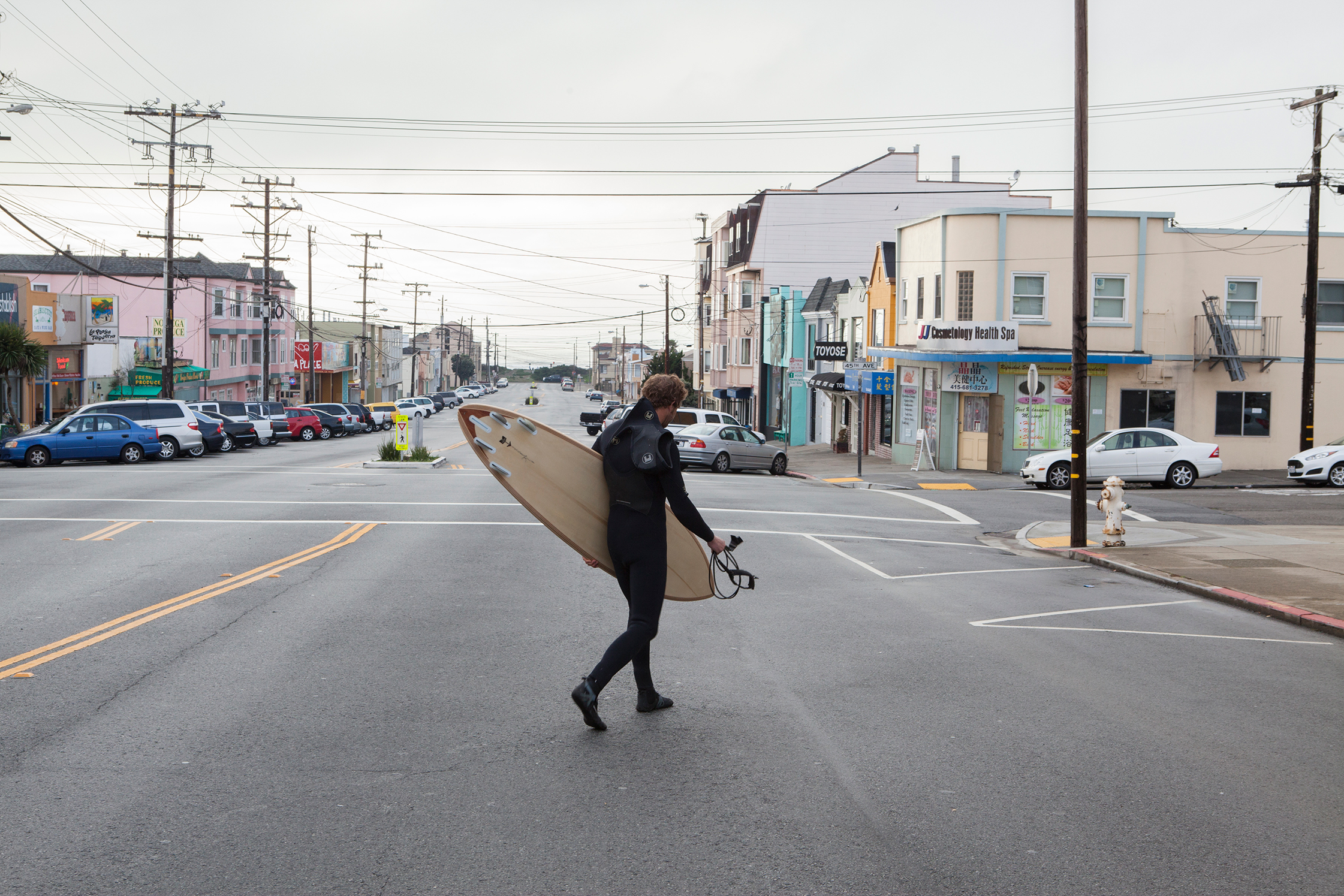
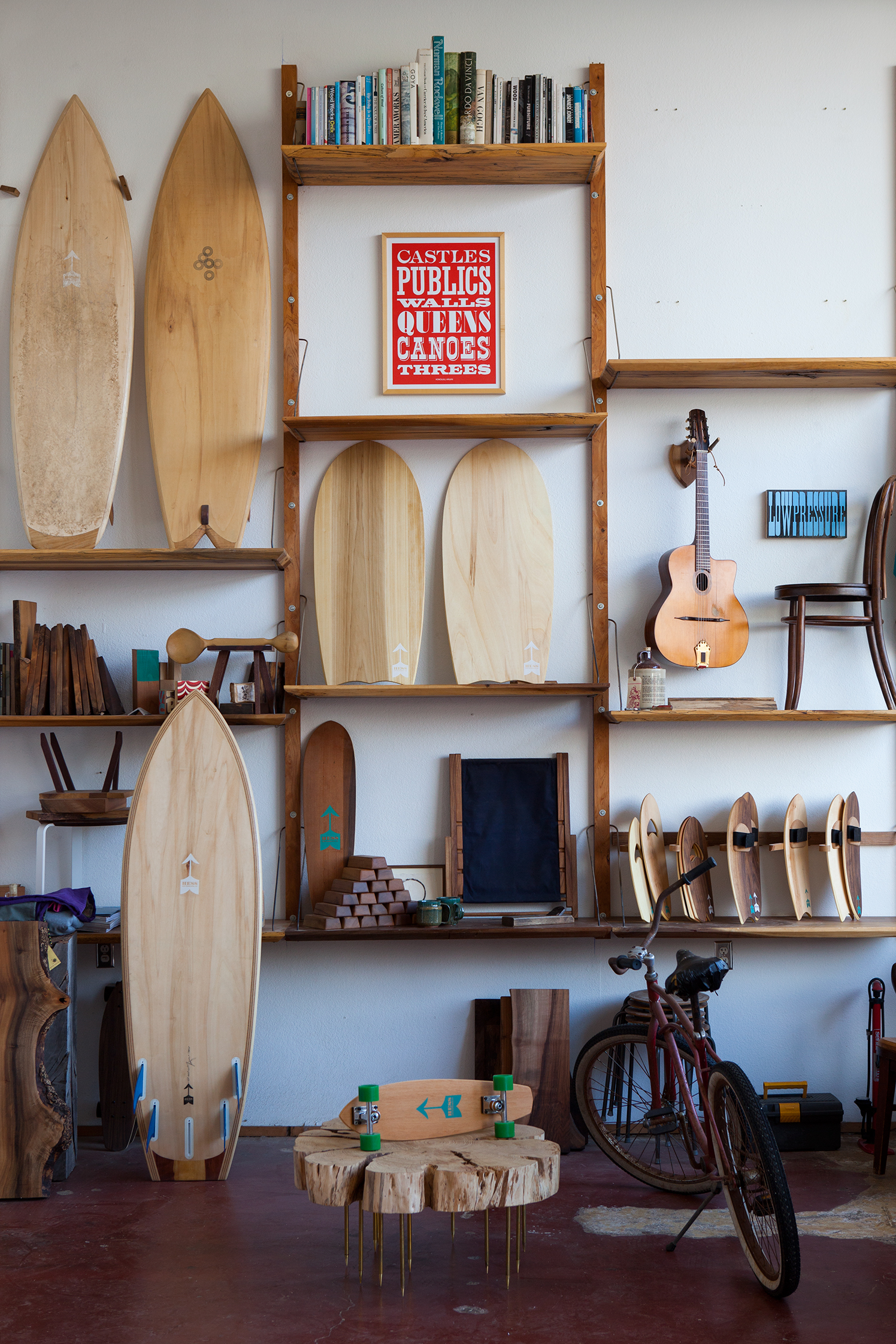
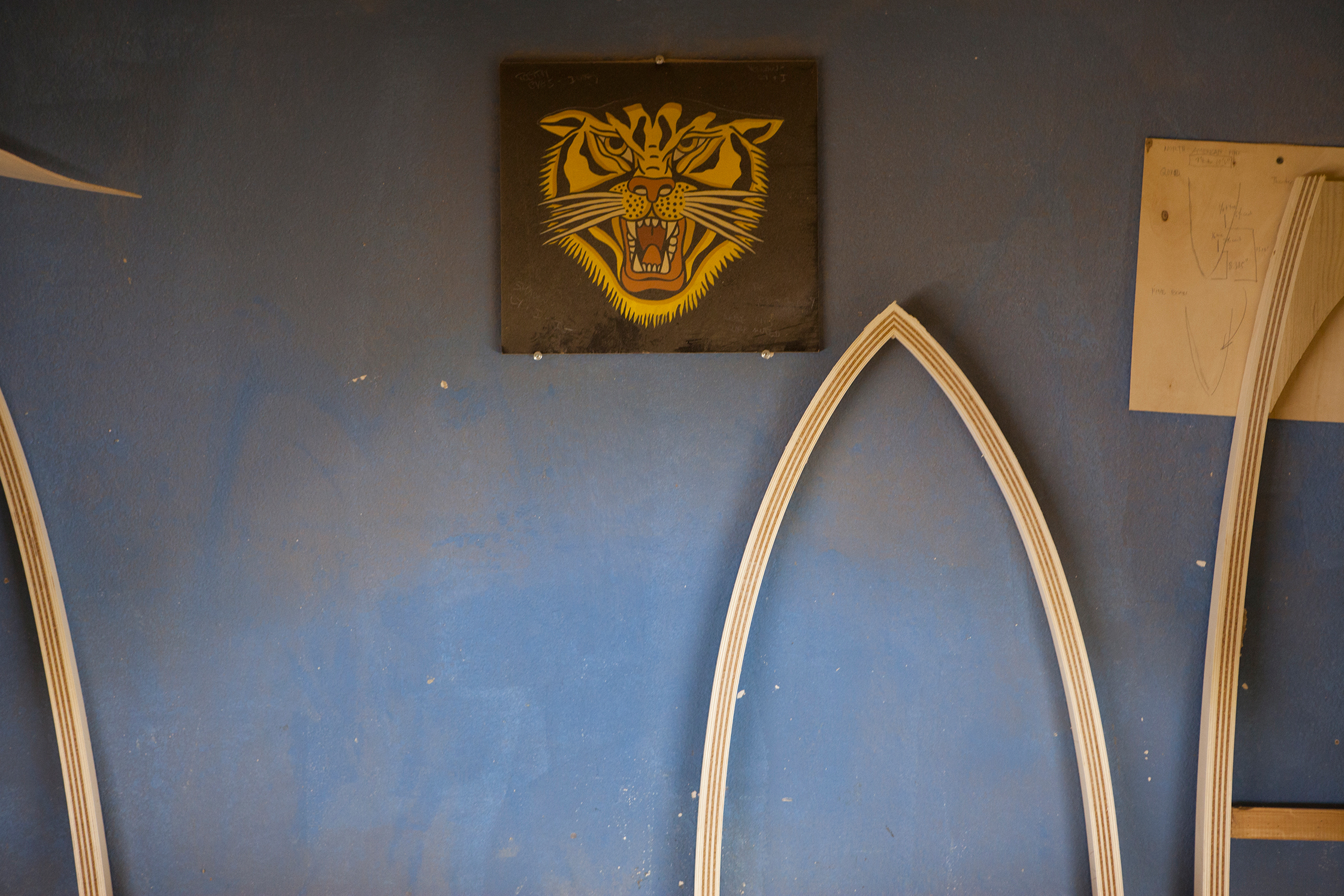
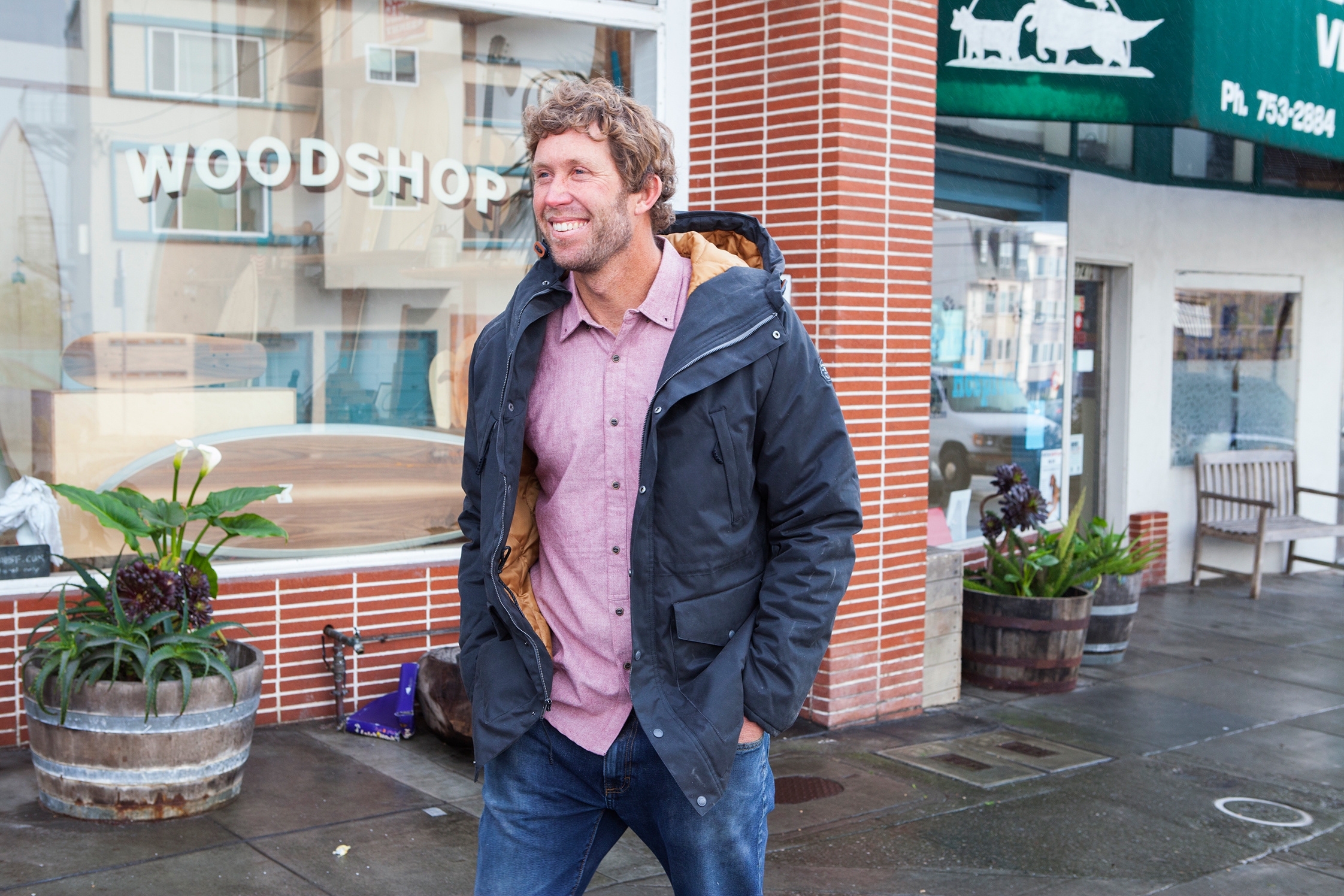
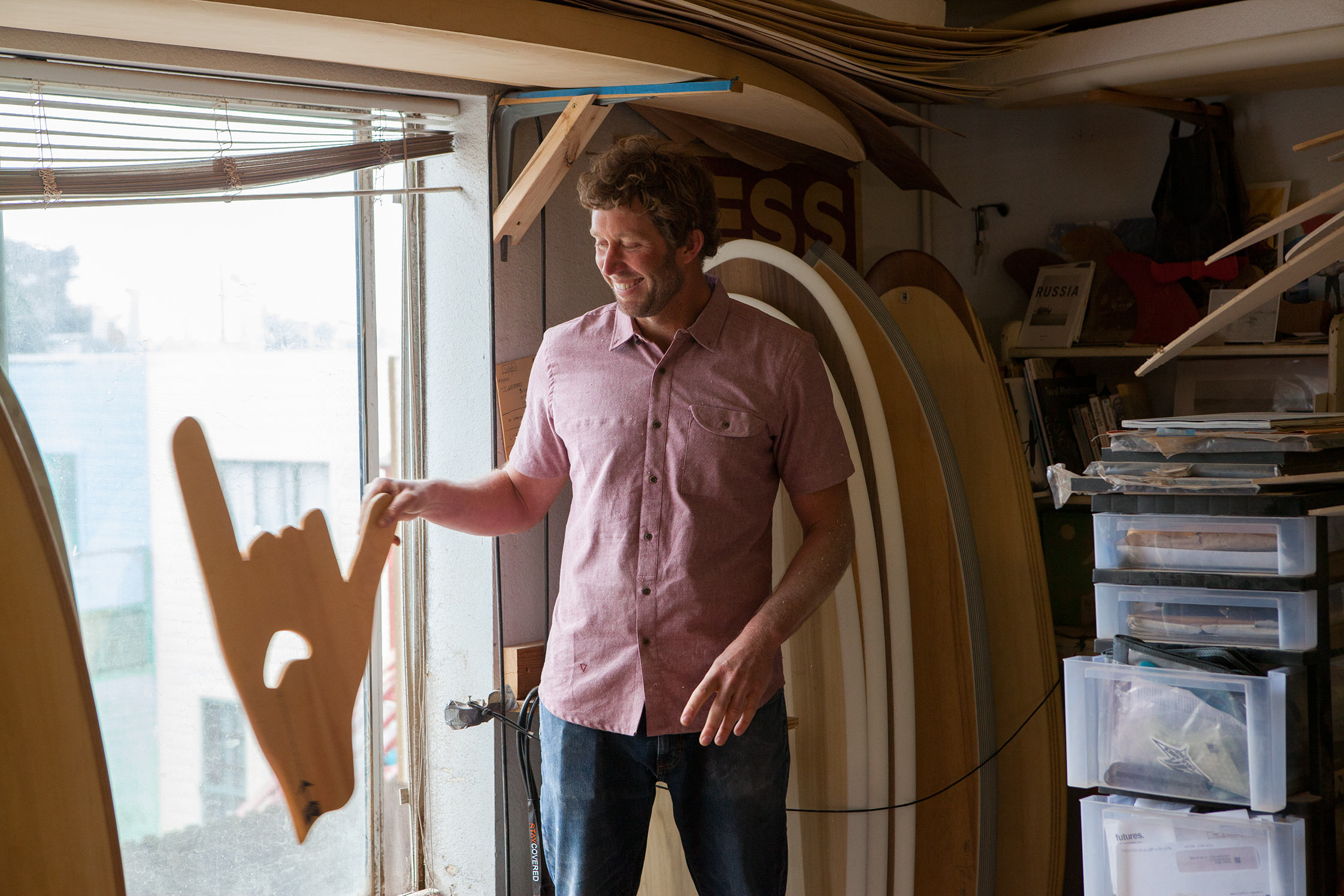
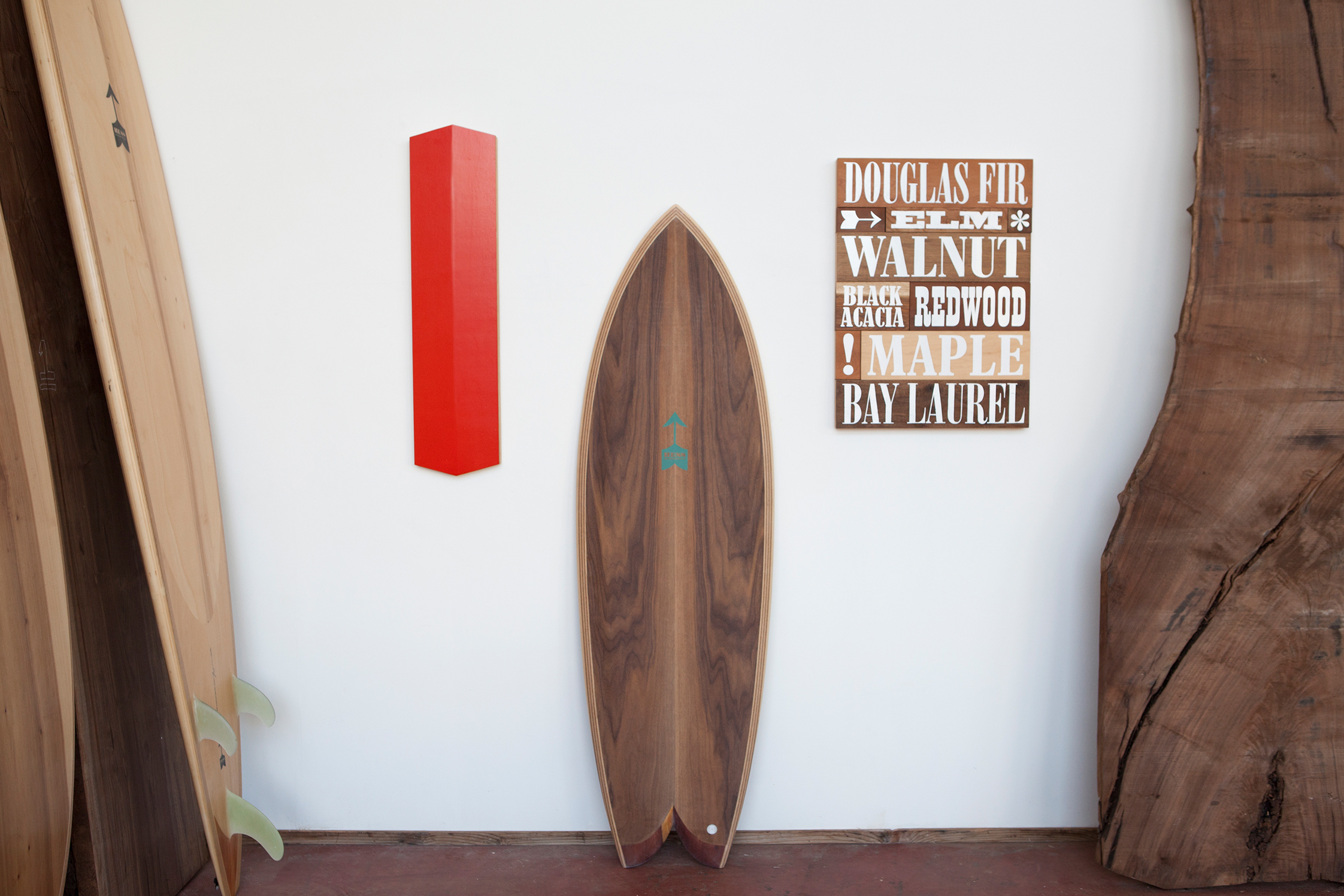
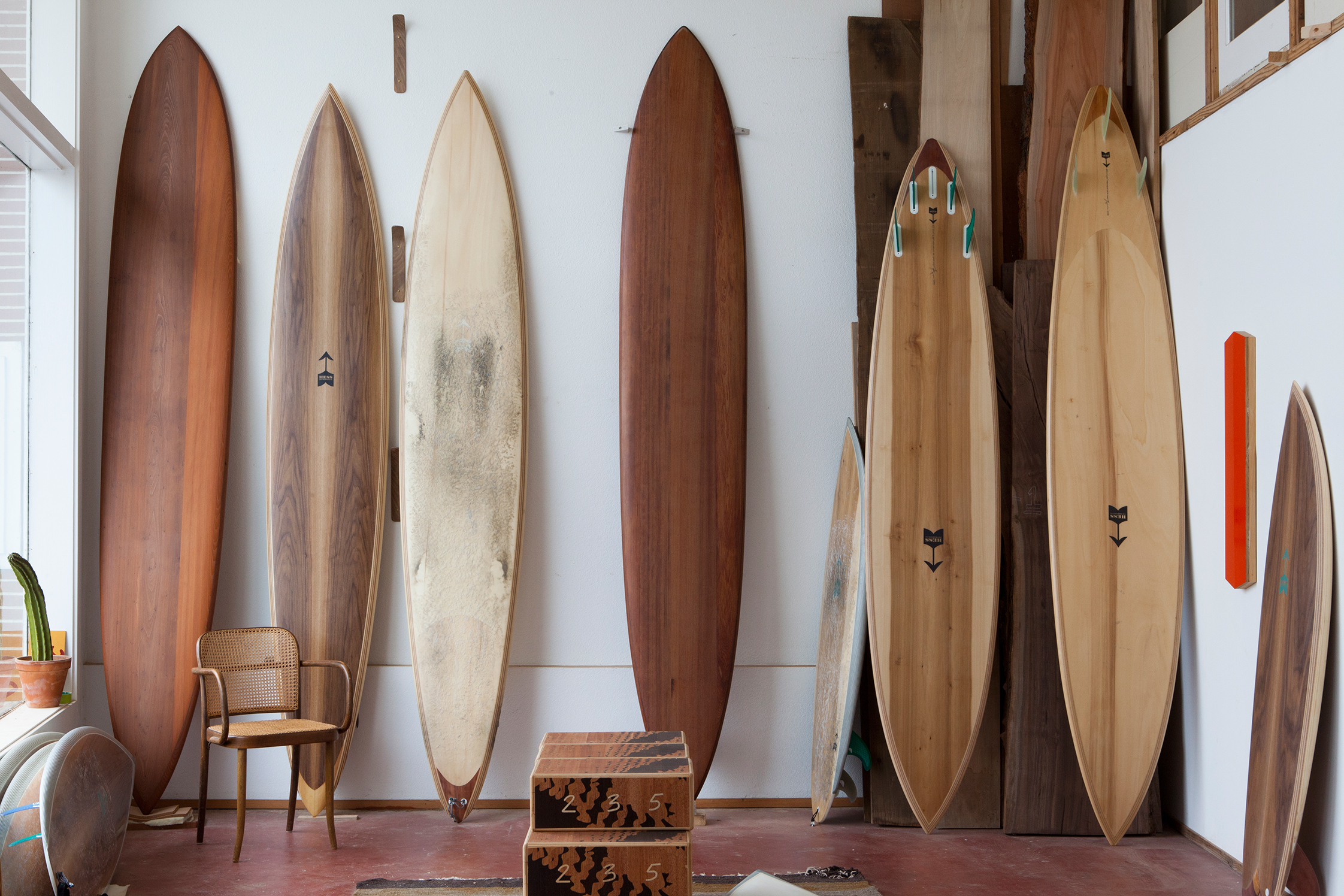
How did the wood shop come together and what’s it like to share a creative space?
I’ve had shops all over the Bay Area, from building furniture to when I was a contractor and had my own design and build company. I had a shop in Richmond, and also one in Oakland. They were all sort of shared spaces, but they didn’t have the same creativity as here. It all just happened sort of organically with this space.
When was that?
Almost fours years ago, so we’ve been here for a good amount of time. We were all surfers living in the Sunset wanting to have a commute just a block away from the ocean and be able to have a workshop in the Sunset rather than driving two bridges over to the Richmond to build surfboards – that’s kind of insane.
Furniture builder, Luke Bartels, and I actually started riding our bikes around the Sunset, looking at old churches, trying to talk to people. There’s this old place, Maxwell Blinds, that would have been just perfect and we would go there and ask “when are you guys moving out?” Finally we saw this place. The owner was just a nice old guy, and he liked our idea of turning it into a wood shop.
What was the space used as in years past?
It’s been a bunch of things. It was a gym. It was a hula store, which was my favorite – like a Hawaiian store. This whole space was filled with Hawaiian t-shirts and leis. Then it was also a bank, which burned down. Then it was a supermarket, as well. It’s been all sorts of stuff, and prior to us moving in, it was an old funky gym that no one ever went to.
The four principle people who moved in here were Luke who builds furniture, Josh Duthie who builds chairs, and Jeff Canham, the painter. We all sort of do something separate or different, but share a like-minded aesthetic. It was never intentionally a collective space, that’s happened organically. For example I’ll love a wood that Luke is using in a table and could really see how to apply it to building surfboards – like this chunk right here is an off-cut from a table from paulownia wood that was grown in the Central Valley. Now it has become the tail blocks in all the boards I’m building.
And Josh, I’ve taught him how to do the vacuum forming process that I use in all the surfboards and he’s now taken that to another level. Today he’s vacuum forming parts and bending wood into round shapes to create chairs.
So there really is a kind of cross-pollination here.
Yeah, and Jeff redesigned my logo: that arrow is based on a painting he did years ago. And it really continues to be that way. We have some new people working here, such as Jacob Aranda, who’s a guitar builder and his building process and method is really fascinating to me. I find myself incorporating some of his ideas into how I build these boards. I’m now designing boards that use no foam or fiberglass.
Oh, so you’re actually doing that now?
Yeah, there are two in the showroom that we’ve been riding and building for clients, but seeing some of his methods really helped me get over hurdles and bring that idea into fruition. If I was still locked away in my own little shop, I think the progression, the evolution of the technologies that we are using, would be vastly different and much slower.
How would you describe the surf culture and the neighborhood here?
Ocean Beach is completely opposite from every other coastal community in California. It’s the forgotten stepchild of San Francisco. A bit rough and tumble, raw and definitely not the prettiest place. It’s a little bit like the Wild West, which I love about it because you can have spaces like this. You could never have a place like this, two blocks away from the ocean, in San Diego, or Santa Barbara, because the coastal real estate prices are so off the charts. It’s like living in a small town, but here you have access to the rest of the city just a ten-minute train ride away. I find this beach truly beautiful. Especially when sitting in the water at Ocean Beach, you can see the city, you can see over to Marin, and sometimes when you’re way out, you can even see Golden Gate Bridge.
We have to endure terrible stretches of no waves and dreariness and awfully cold summers, but the waves can be really good here if you’re willing to wear your hood and your booties and paddle out when it’s freezing. Often the waves are really big here so you get beat up all the time. We call it ‘going for a paddle’ here more than surfing, because often you’re just paddling. The adversity of surfing here suits my personality. You go surfing here and you feel like you’ve accomplished something.
Do you remember the first board you ever built?
Oh, yeah, it’s burned in my memory. I still have it. My dad has created this little museum collection of all my different boards over the years: from the first one when I was 16 to the first wood ones and how raw and heavy those were, all the way up to the Mavericks guns I’m building now. Every once in a while in the building process there’s a board that stands out as a turning point or as a fully realized idea at this point, and I’ll take it and set it aside for my dad. Down in the showroom though I have this magic 10’4’’ Mavericks gun with which I’ve caught the biggest, best waves with of my life. I still ride it all the time. I’ve designed lots of other guns since then to try to improve upon it, but nothing has ever been as magical as that board. It’s hard to distill down between the weight, the glassing, even the species of wood can affect the way a board rides.
When you first started making wood boards, what kind of wood were you using primarily and how did you come to select it?
At the time I was focused on sustainable design and environmental conscious remodels, so I had access to these very interesting, sustainable, FSC certified, salvaged woods. So with the first boards, the rail bands were salvaged redwood and this wood called amapola, which is a more sustainably-harvested version of balsa. God, the first 50 I built out of that had internal wood frame systems. They were very elaborate. The first one took me 160 hours to make. I still have that one, and I rode it for years. I still take it out and ride it occasionally just to remember that feeling. It’s still a magic board.
Do you have a sort of sacred tool – something that you just can’t live without?
Oh, yeah. It’s a Japanese block plane. They’re so simple. The magic part about it is the steel. Japanese steel is always the best. The blade can be tuned to such a level of precision that you can do things you couldn’t do with a regular plane. I love the simplicity and the adjustability. See, you just set the blade, put this wedge in to hold the tension and you can literally tune the blade depth by tapping back and forth.
I went to Japan quite a few years ago with my wife Erin and we travelled with a bunch of friends from Tokyo out to the Nii-jima islands and then down into the south and went surfing. We introduced Japan to the boards and the ideas behind them. I also searched for tools along the way. There was a shop over there where I built quite a lot of boards, Holy Smoke in Yokohama, got a couple of these for me. They’re amazing. The simplicity of the design just captures me. The ultimate design for me is truly simple but you see the genius in the simplicity. I try to incorporate that philosophy into my boards even though these are way more complicated than the average surfboard. But this is a rad piece of wood here – it’s made out of cypress from the park.
From Golden Gate Park? No way, tell me about it.
Well, I have a friend who works there – and we can’t say his name because we’re not supposed to get cypress from the park – but he brought me a couple of chunks and I’ve saved them for really special boards like the guns that we ride here or over at Mavericks and we use them for the tail blocks. You know you look at cypress and they’re such beautiful, tough trees that have to endure so much wind, torture, cold and sideways rain. They’re just morphed by their environment. A cypress is of this place and it’s tough and strong. This is the last piece. My 10’4’’ downstairs I was talking about has a piece from this same chunk too. I’d love to build an all-wood board out of cypress sometime.
I never got into building surfboards like this out of a desire to be a wood board builder, it was a desire to build a better surfboard. I wanted to find a way to build a surfboard that would last far longer and be tougher and the wood is what has always been the challenge of trying to make a performance oriented board, because you have to build the strength out of the wood and you have to get it to flex, move and be alive and have a resonance and tension. If you build a board and you’re more focused on the aesthetics of it being a wood board, you’re just going to have an object rather than a really functional object. I love the idea of having something that is a beautiful object, but can also change your surfing. That’s always been the whole pursuit.
Are you inspired design and aesthetic-wise much by other woodworkers? Do people working with wood spark your creativity?
There are people who have a philosophy of wood that inspire me. Like Geoff Arco whom I worked with for years. He was trained in prosthetics-making at UCLA. He graduated from their Master’s program in 1964. Basically they taught him how to make round things out of wood. He was making prosthetics for everyone coming out of the Vietnam War. I shared a shop with him for sometime. He was so undaunted by the idea of creating curved things out of wood. That dramatically influenced my whole approach to furniture, design and also realizing that I could create a surfboard out of wood. Because a surfboard is all curves. There are other artists too, like Jay Nelson. What he does with wood is amazing. He looks at certain woods and their textures and it inspires him to create these certain shapes and it frees his imagination rather than confining it.
How do you get around town?
In the neighborhood here I just walk around or use my skateboard. I mean, I have my little red van if I need to go run errands and stuff.
I believe it’s a German vehicle, isn’t it?
It’s a Sprinter, but it’s the Mercedes sprinter (laughs). The nice thing about the Sunset is that it feels like a small-town because I live a block away from the shop and there’s a bunch of nice little restaurants around. My wife complains that I never leave the Sunset, but I’ve got everything I need here. This little neighborhood is changing. When we moved into the shop on Noriega Street we didn’t have Devil’s Teeth Bakery and the Pizza Place had just opened. There’s little stores and stuff here now and it’s a real neighborhood.
We lived in Oakland for a year before we moved here. And then we moved to the Sunset in 2003 and have been in this house since 2006. When we first moved out here, there was nothing. There was no place to go and get something to eat. There were dive bars of course, but it’s amazing how it transforms your life to have a nice restaurant to walk down the street to.
So tell me about the house, what kind of shape was it in when you bought it?
When we first got this house, my wife cried because it was so awful. The whole kitchen was just full of Budweiser scuba tank cans. There was no running water or gas and the former owners barbequed in the kitchen everyday. And this room had like five or six layers of carpet, every kind of mold you could imagine and twenty years of accumulated trash. We opened every window and basically threw stuff out the windows for three days and people would come and dig around in the trash. Every morning more stuff would be gone. It was such a fascinating social experiment. I think it was like a crash-drug house. For a few months we would get people lurking and looking to buy and I was building boards in the basement and people would come and knock and I’d have to tell them, “hey, it’s not that house anymore.”
Is that photo up there Ocean Beach?
No, that’s Nii-jima island in Japan. Erin took that when we went there. We’ve only been once but it’s definitely on top of the list to go back there.
And is that a Jeff Canham painting above the mantle?
Yeah, I made him a gun and he made us that. He’s got an awesome little studio space attached to mine. I love the trades. Especially trading surfboards for art is my favorite.
So tell me about this collage.
I did a few trips to Indonesia with Thomas Campbell for his movie The Present. I was building boards with Dan Malloy and we were surfing a lot together. He and I went to Indonesia together and we designed and built a whole quiver of boards and took them and found amazing waves. It was some of the best R&D I’ve ever done. One of the best surfers in the world, myself and just the most perfect barrels you could imagine and that was our job for two weeks. So Thomas made me that as a sign of appreciation. This whole wall has been Erin’s creation. She curates it. Once in a while I’ll come in and there’s a new addition.
What is on the travel horizon?
We are really looking forward to spending a couple of months in Hawaii shortly. We’ve also talked about going to Morocco together soon. That’s one of the top of the list. It just seems like such a different experience and culture. Plus they have amazing waves. I’d really like to do a big wave trip to Chile this spring. I’ve never been down there.
And you’ll be shaping in Hawaii?
Yup, I have a set-up there at this place called the Sugar Mill. It’s there on the right side of Haleiwa. It is this old industrial zone they turned into artisan workspaces. I have a good friend who has a wood shop there and he is going to build me a shaping room. I can just show up and use his tools and bring some basic tools of my own.
I was just over there researching some of the wood that I’d like to use. There’s this interesting, invasive wood they’re trying to eradicate, but there’s so much that can be sourced. There’s this wood called Monkey Pod, which grows everywhere like a weed there and they’re just trying to get rid off it. But it’s the most beautiful stuff, like if you could combine walnut and poplar – it’s got this really dark striping. It’s light and really strong and I want to build some boards out of that.
I want to use it as a period of time to step away. I get locked into my little space here. I want to be exposed to other shapers, other people building things and other materials. I want to see what can come from that. It’ll be a time of exploring new ideas.
Danny, thanks for sharing your little corner of San Francisco and for reminding us that no matter how rainy or foggy, it’s always worth walking a few blocks to check the surf. To find out more about Danny’s wood creations, visit his website. To find out more about his shared workspace, The Woodshop, visit the website here.
Photography: Kenny Hurtado
Interview & Text: Zachary Slobig
